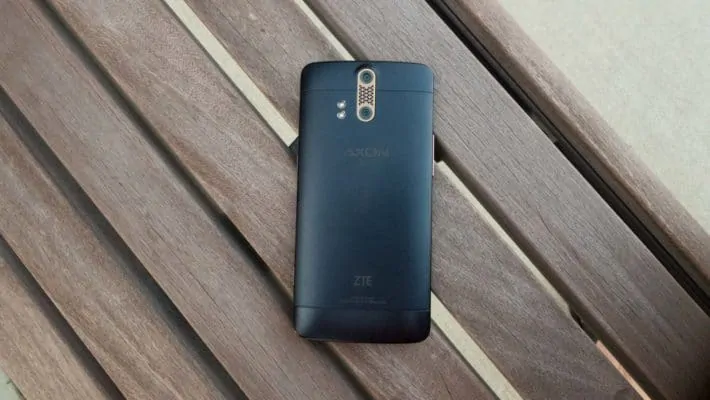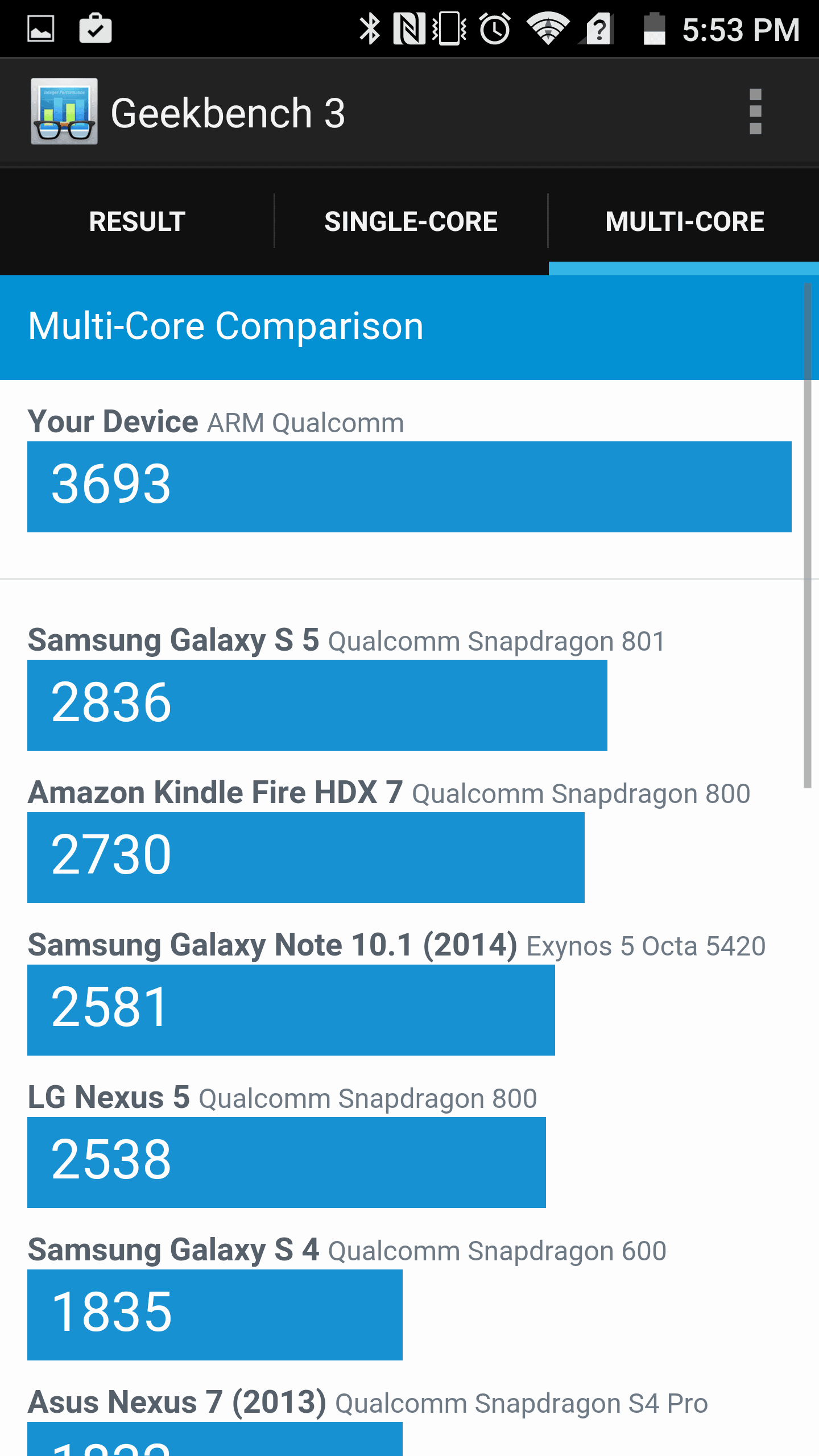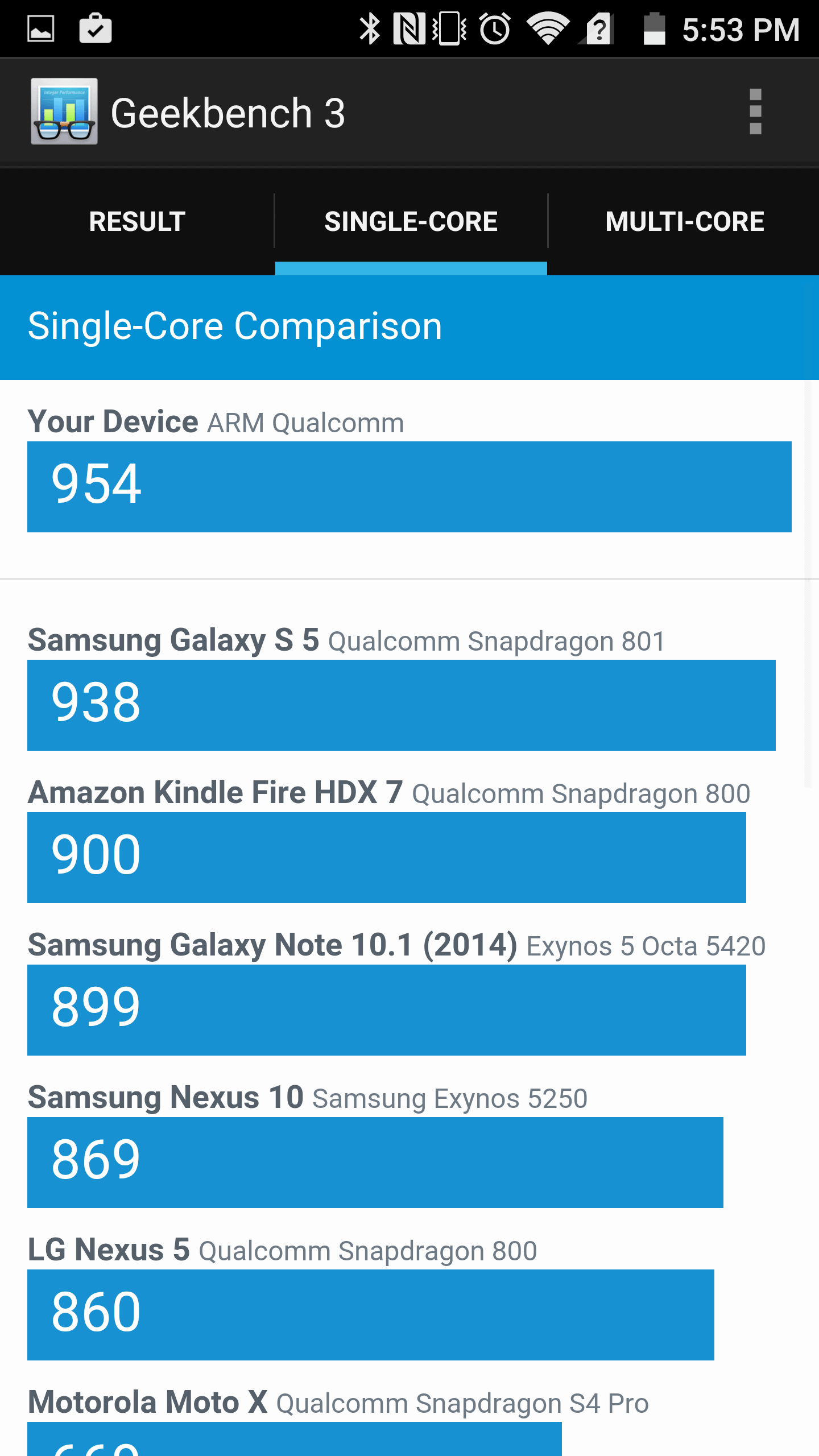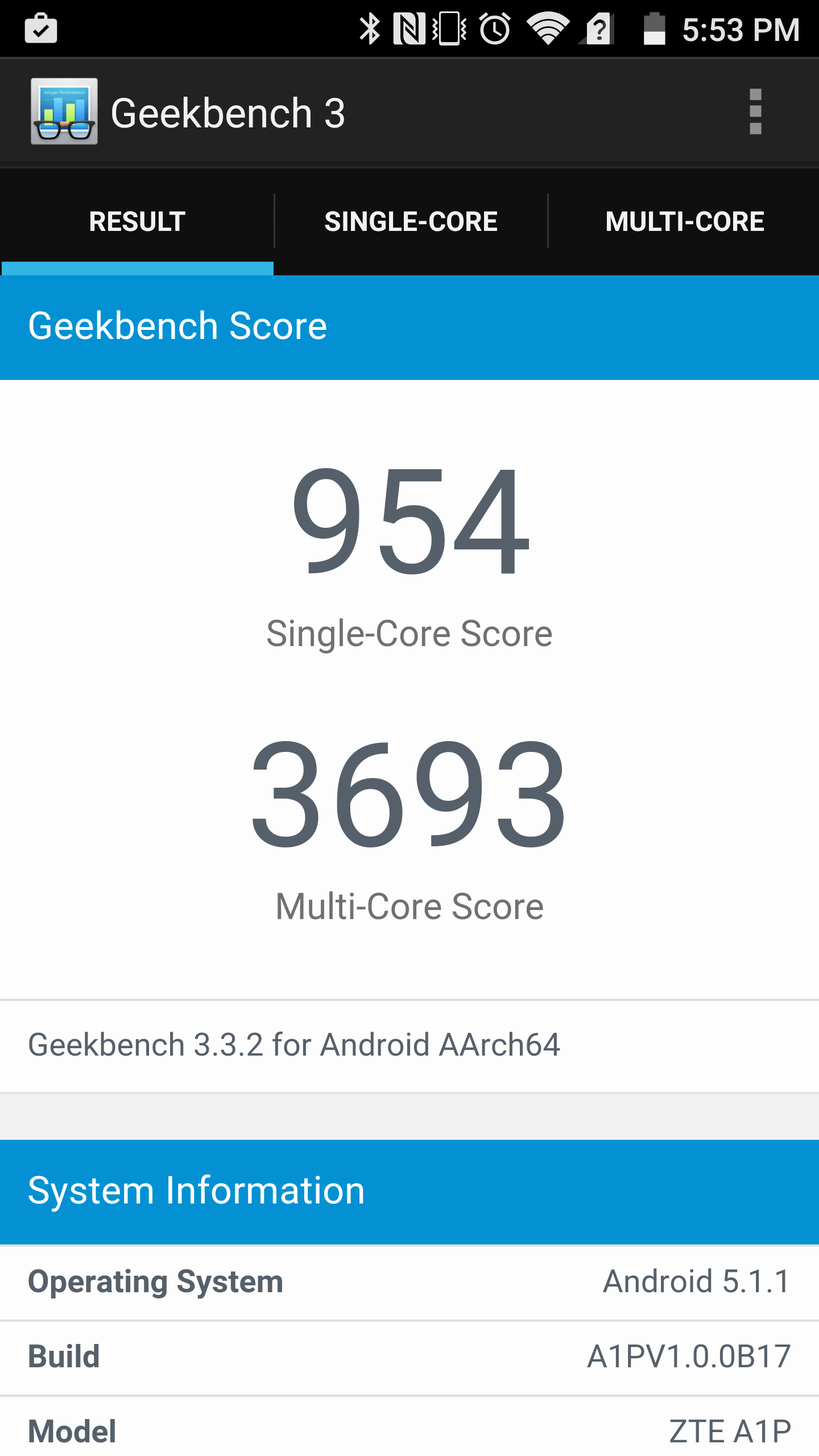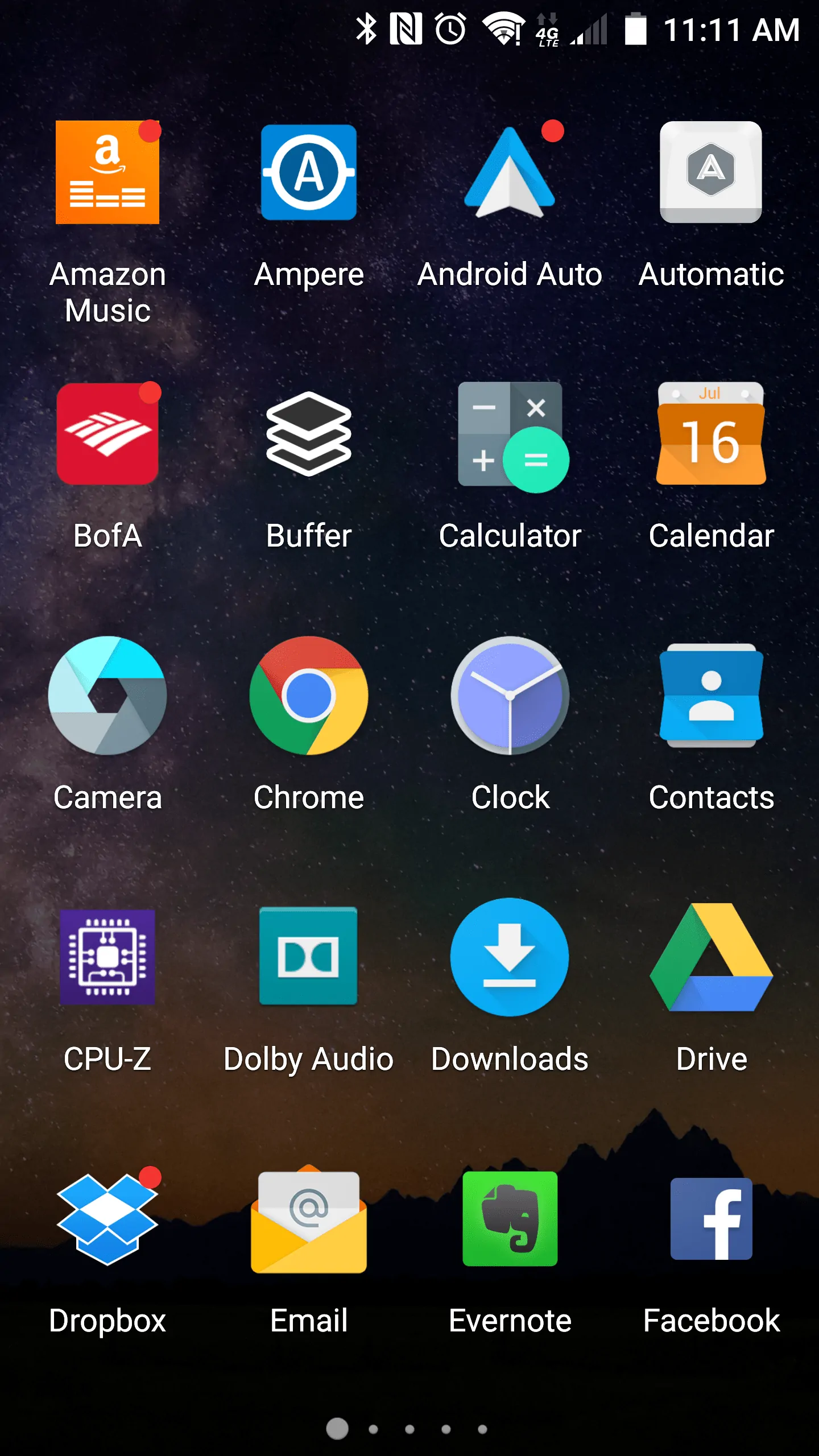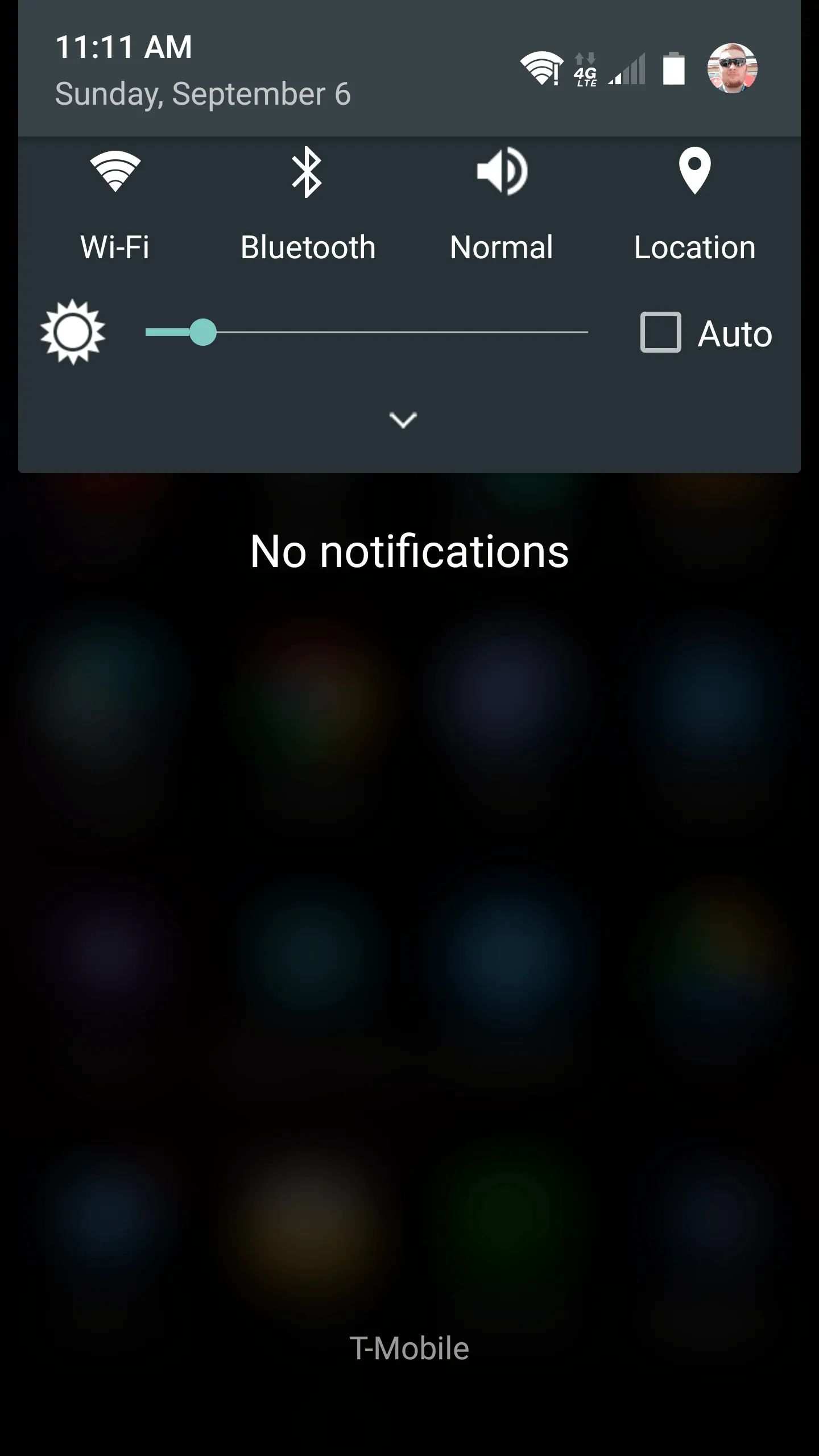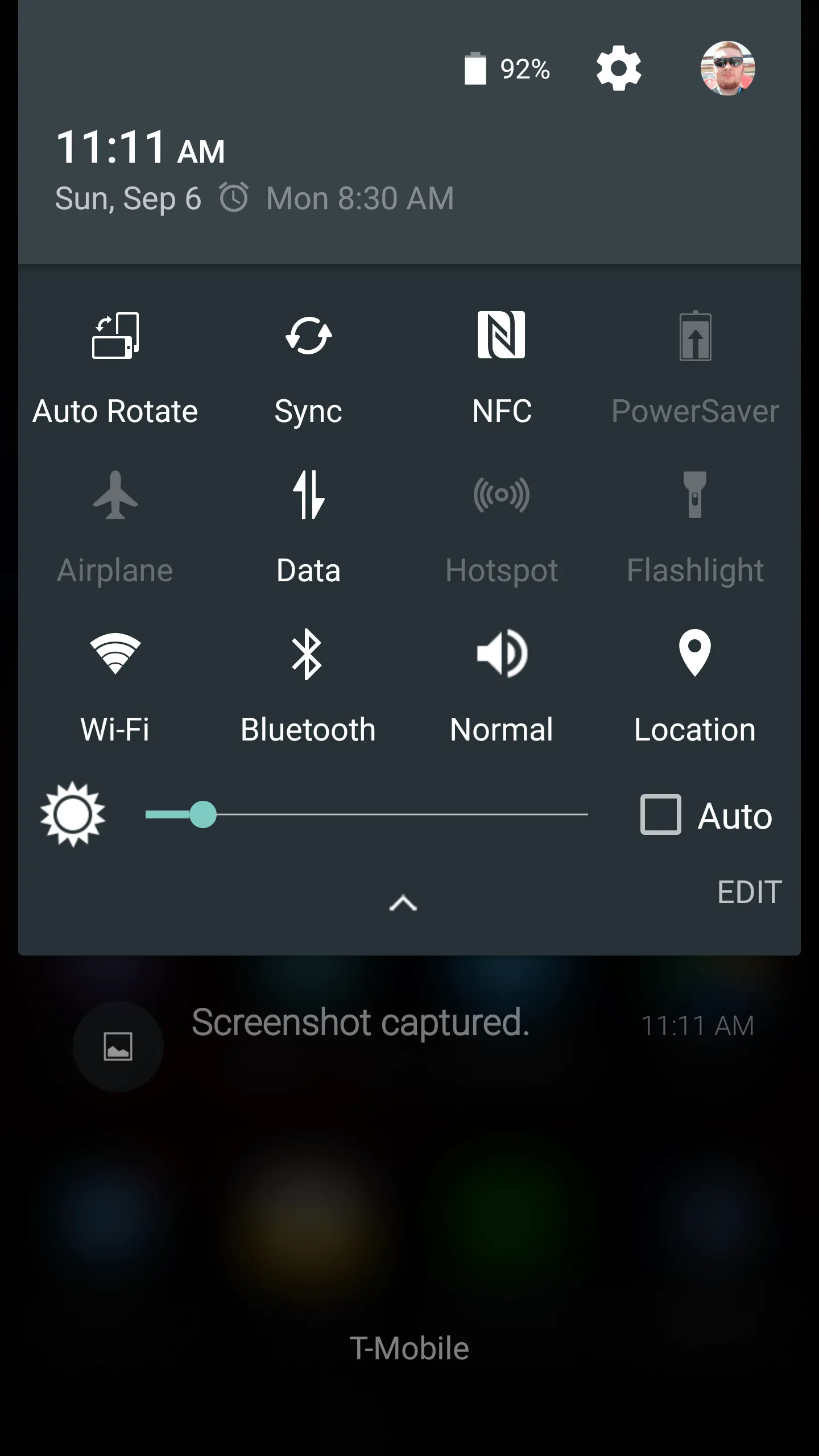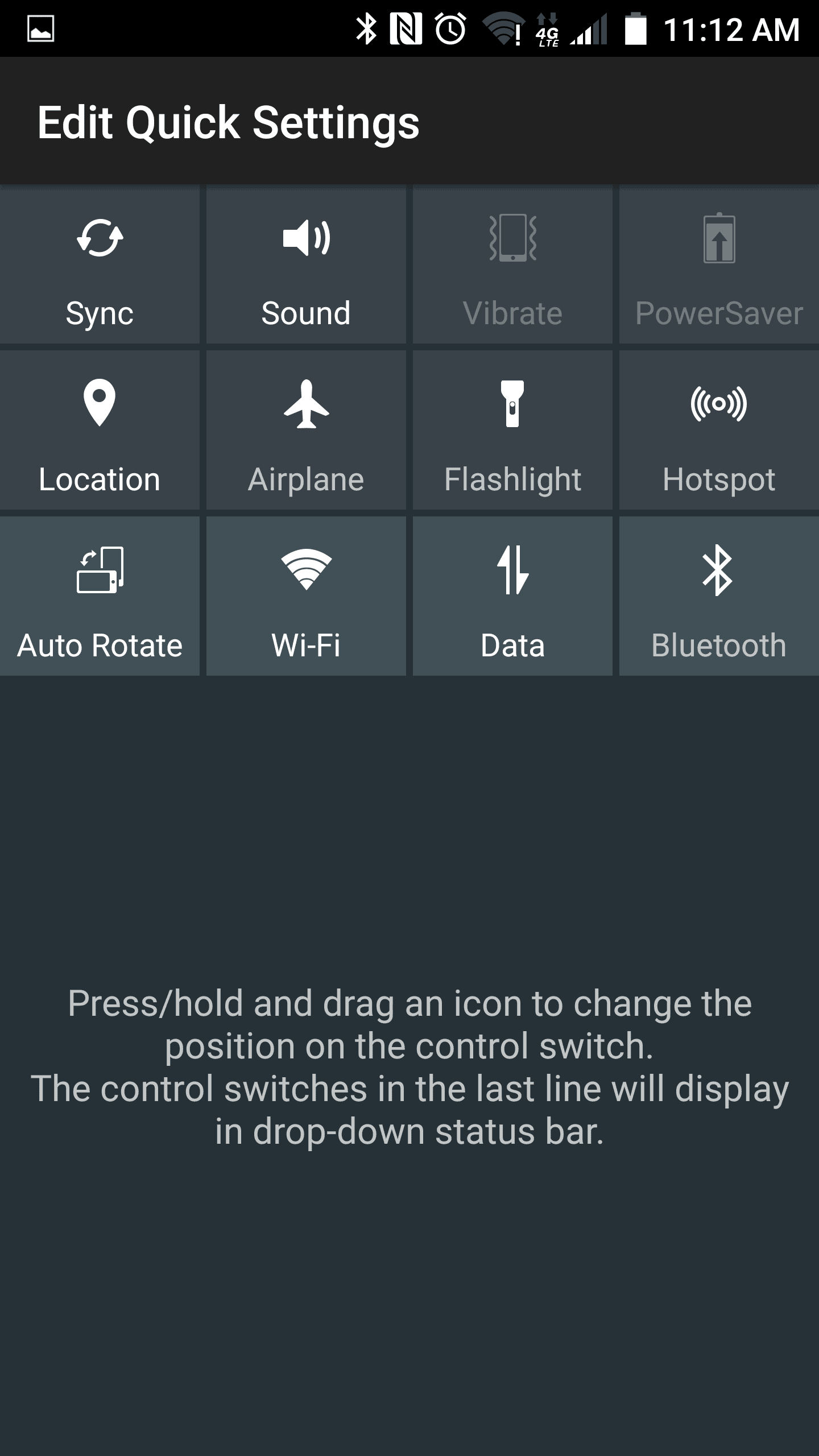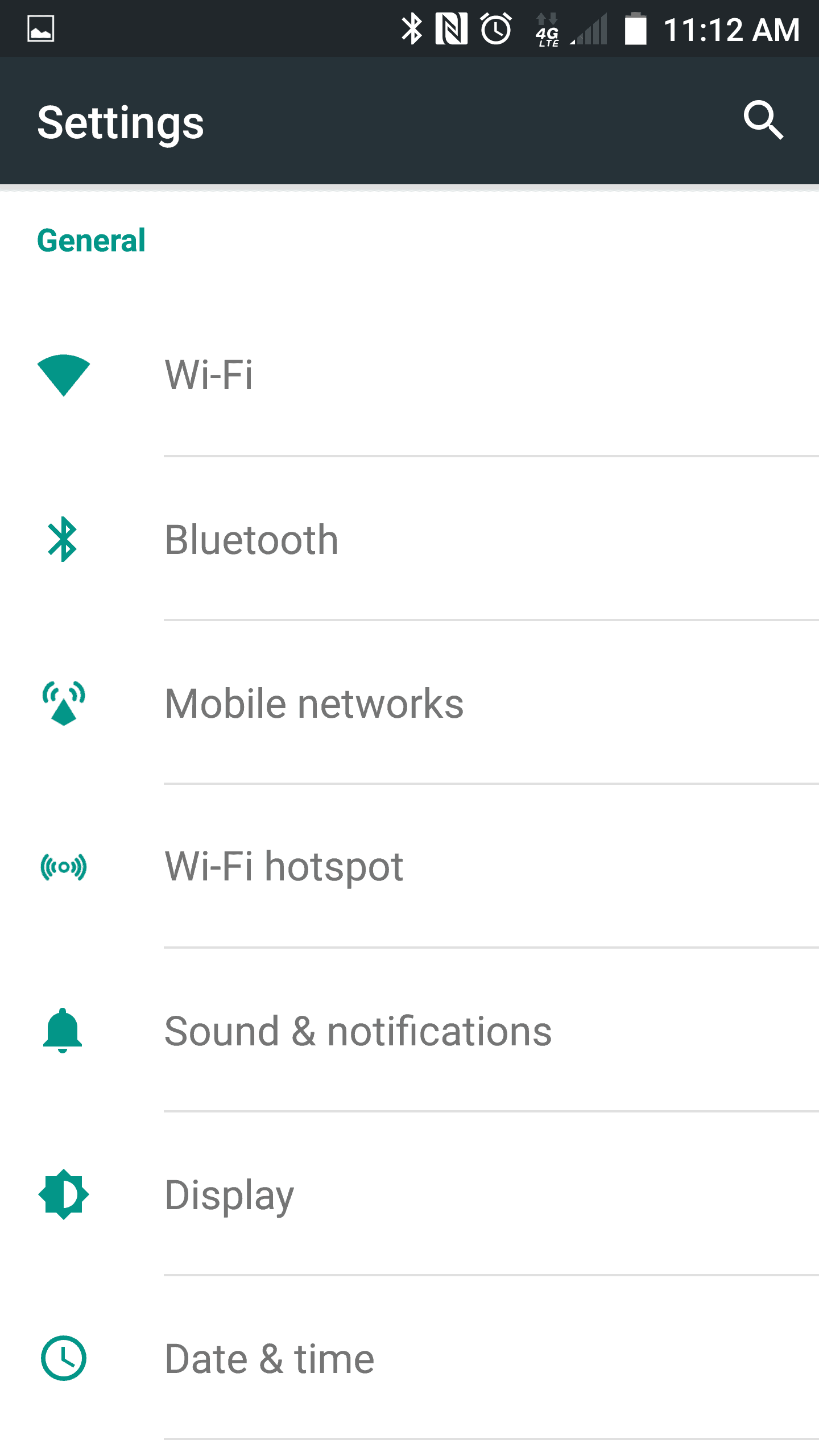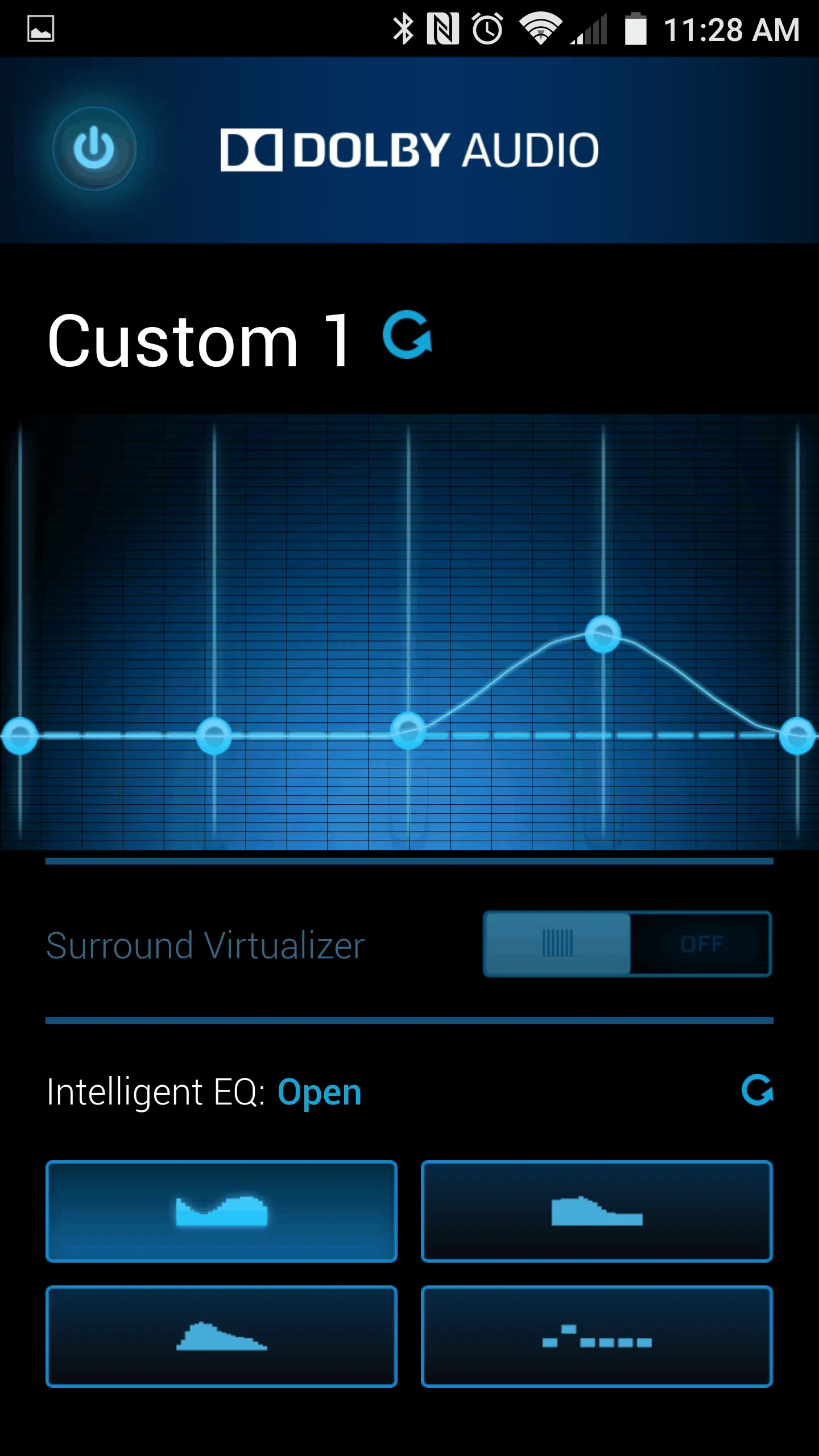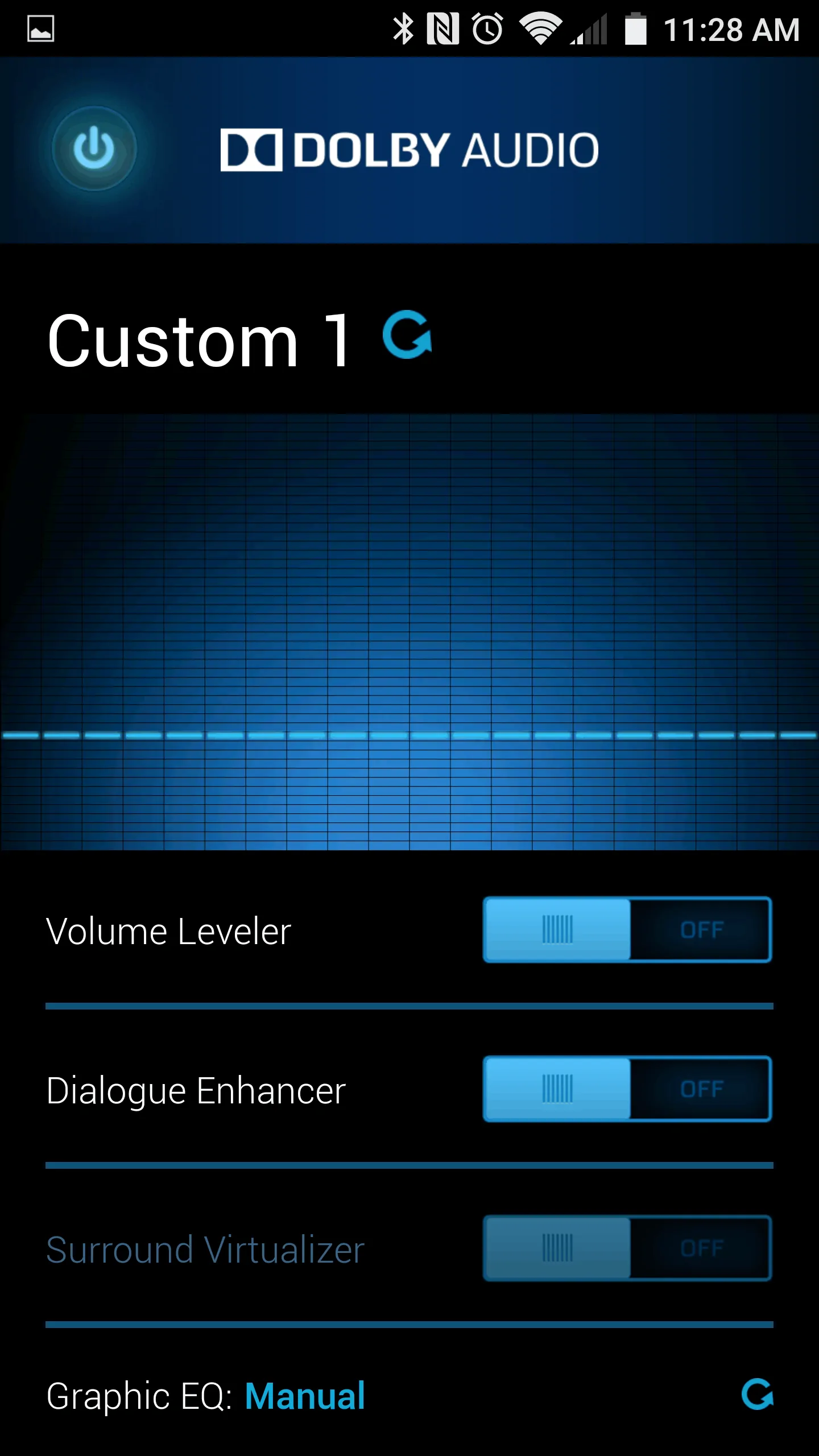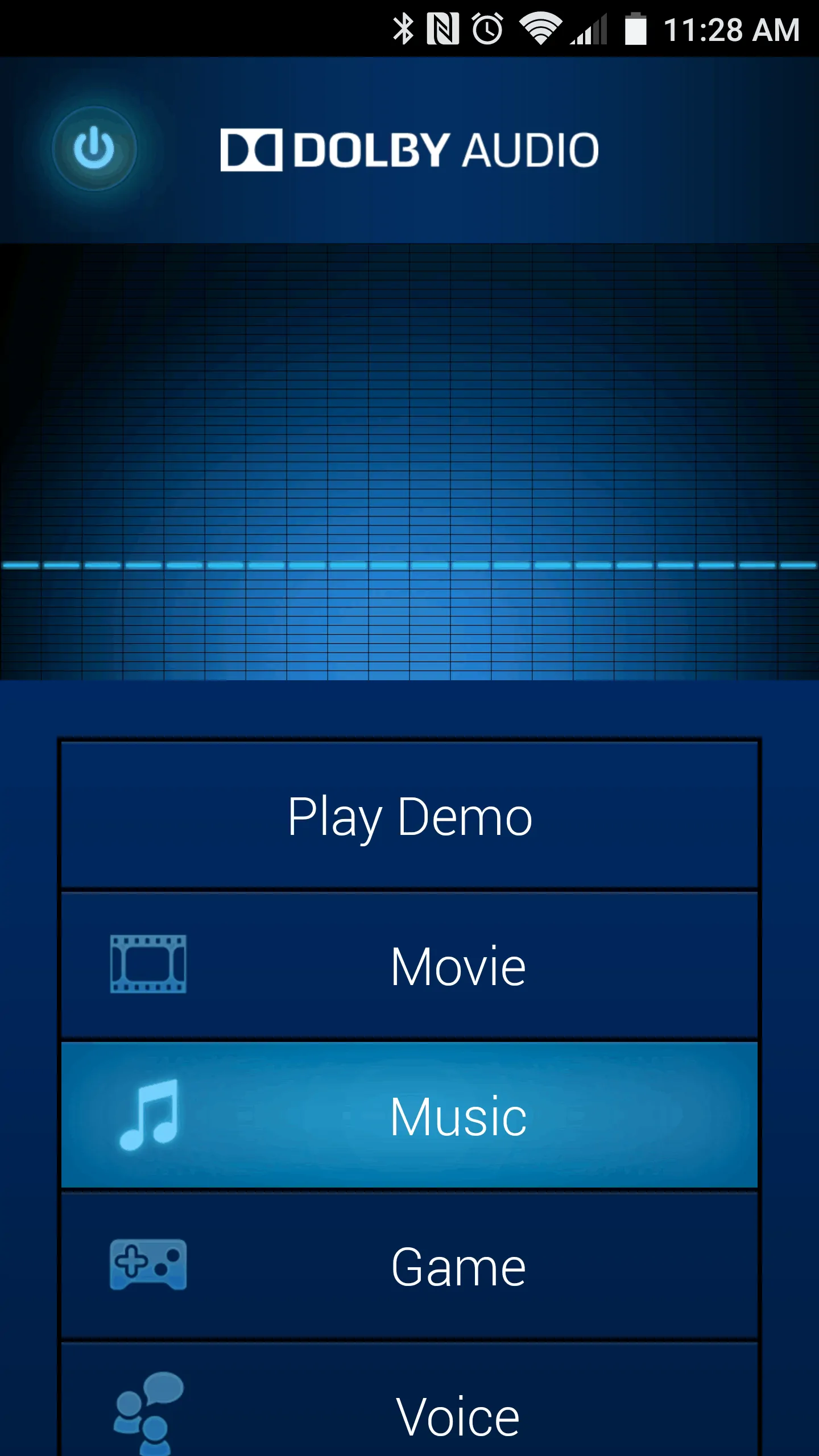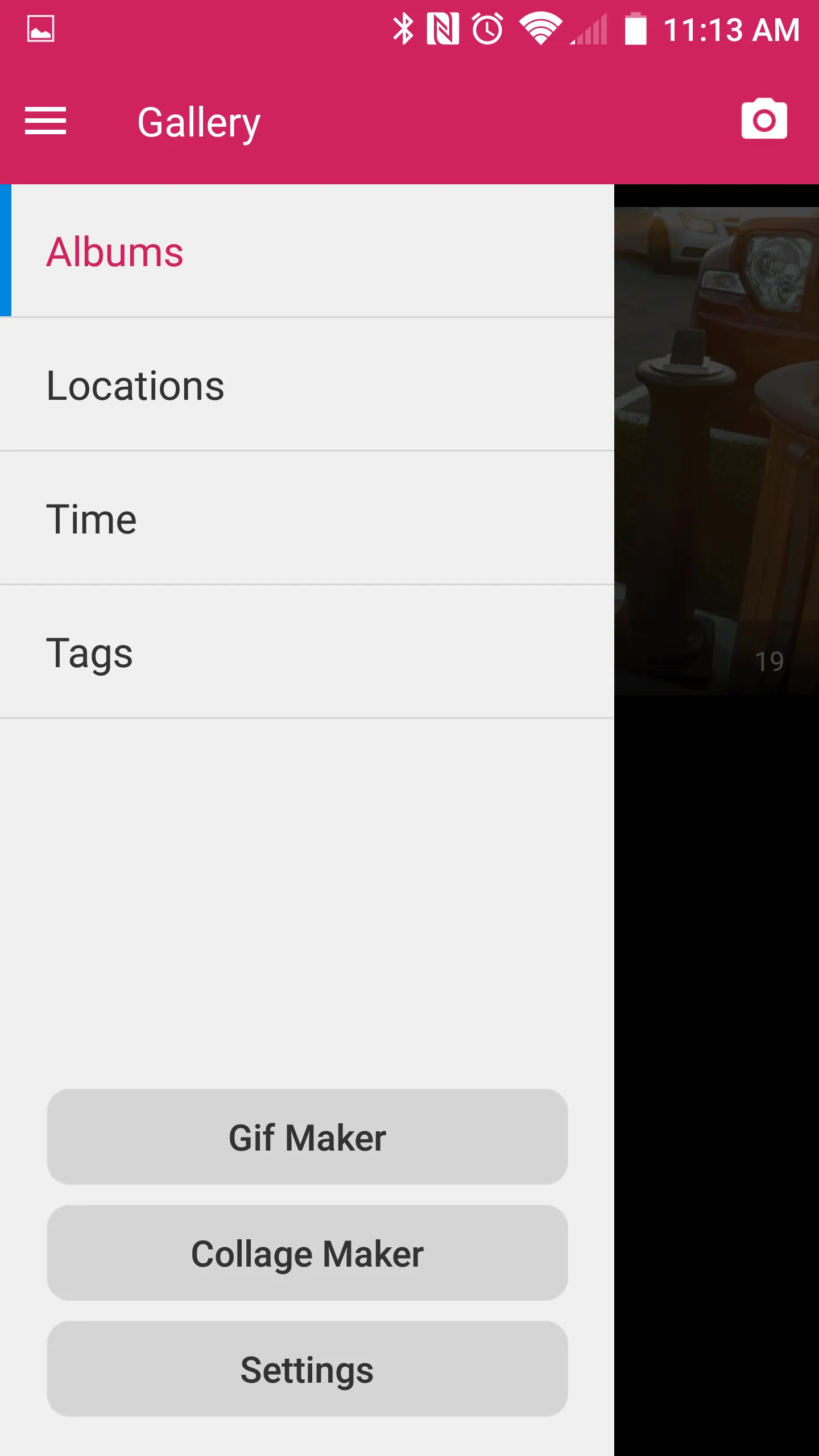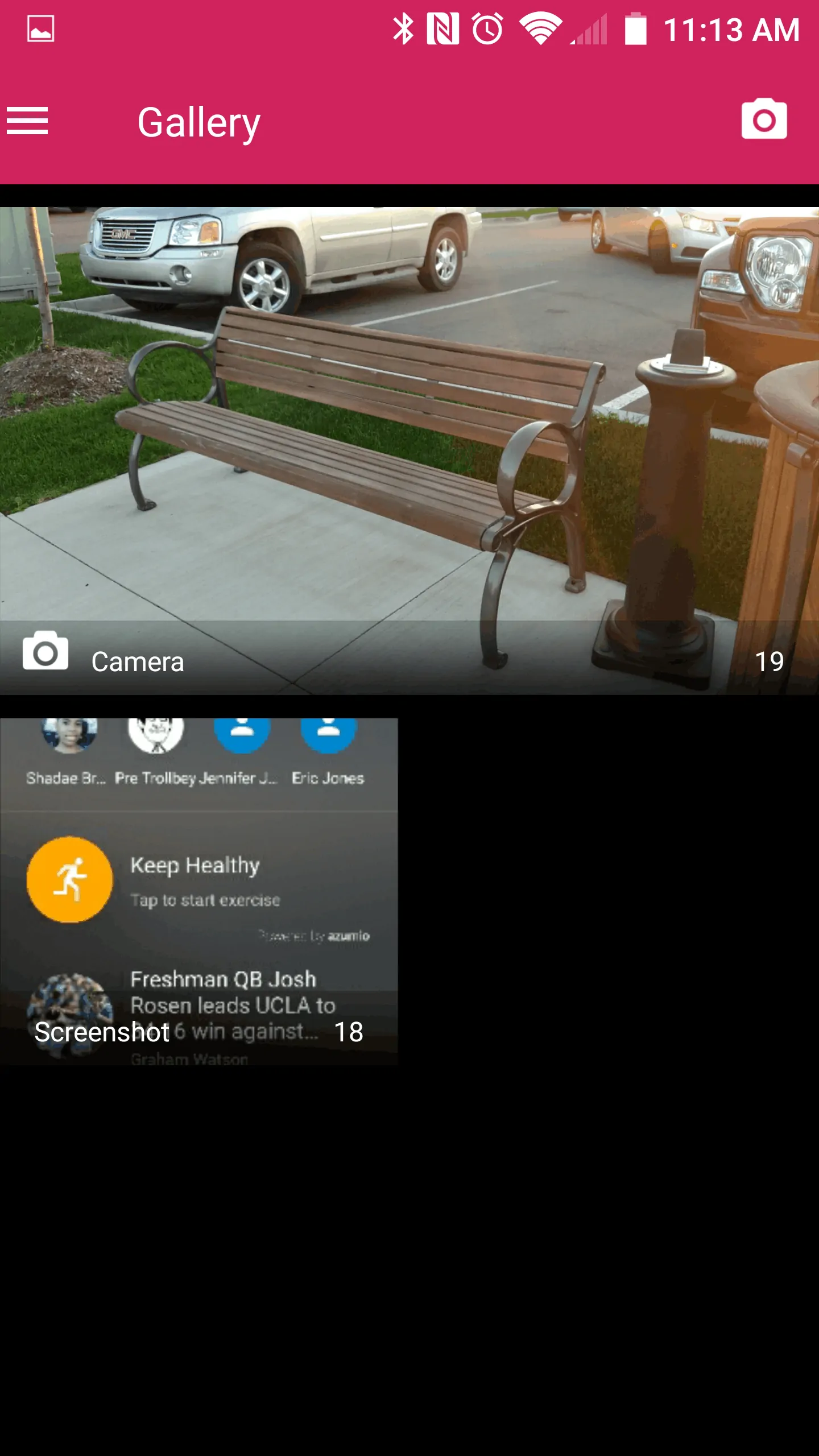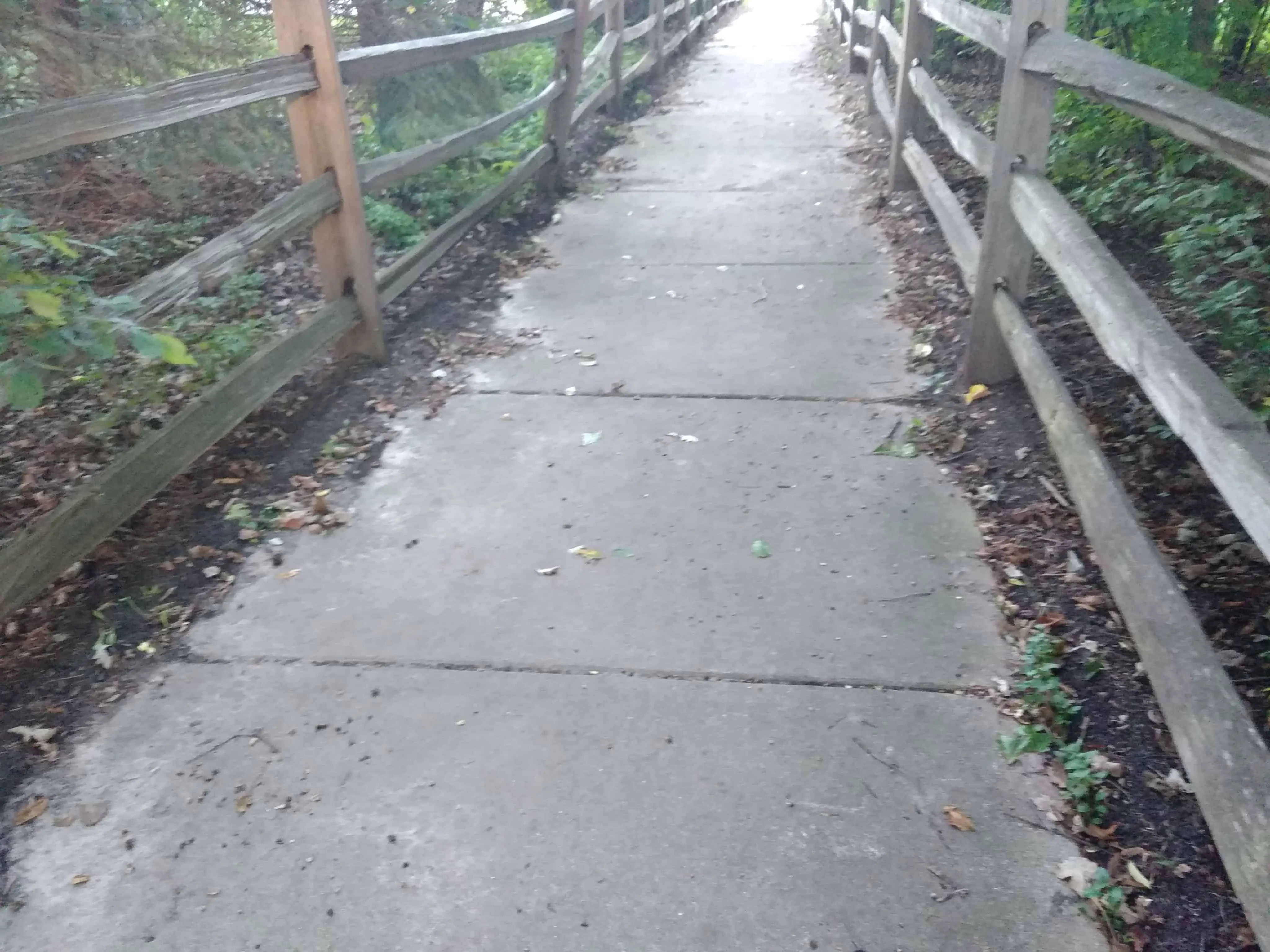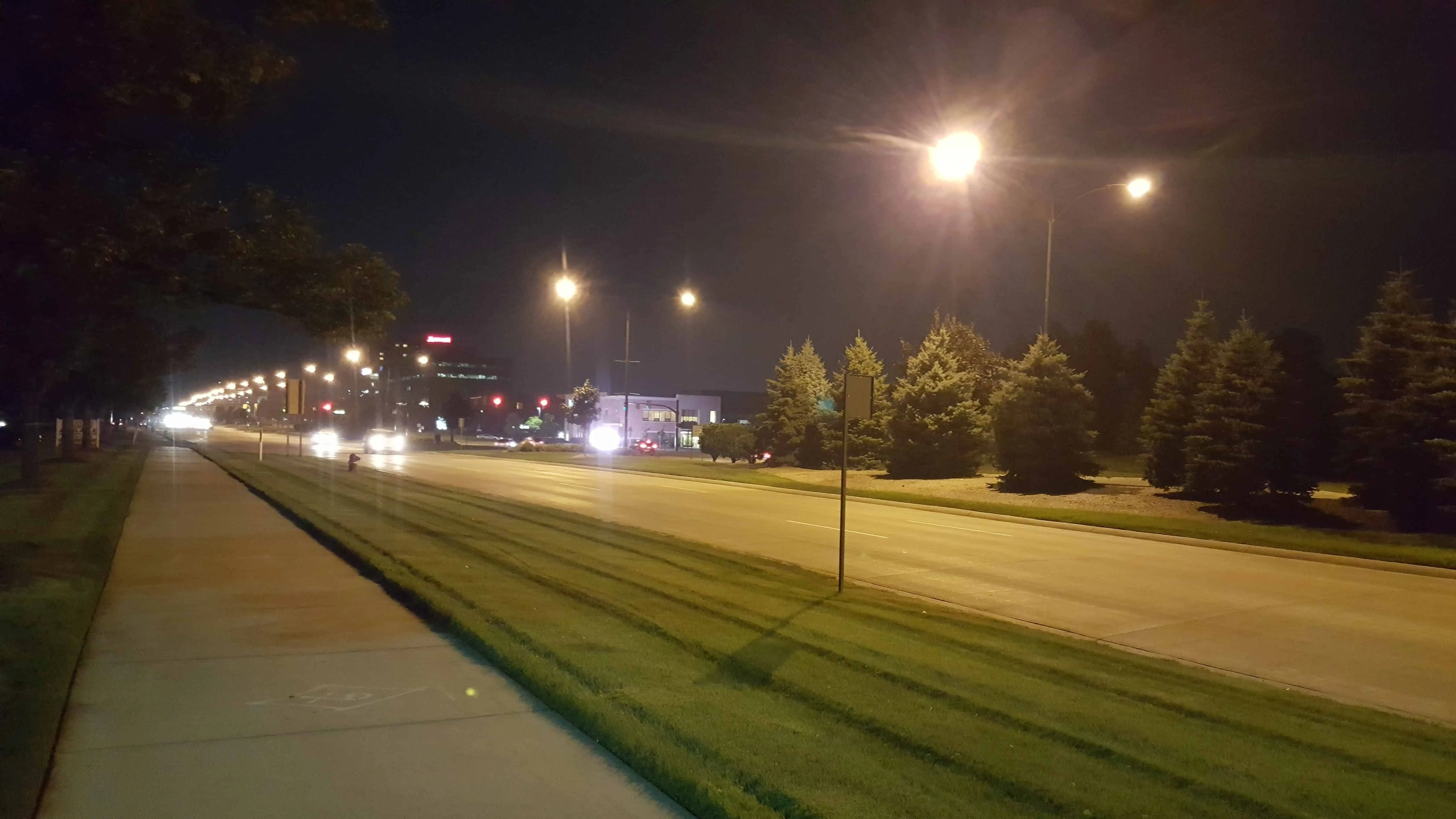ZTE is probably one of those smartphone brands you haven’t heard much of. You might see some of their lower-end or mid-range offerings in your local carrier store. Whether that be AT&T, Sprint or T-Mobile. But when it comes to high-end phones, those are mostly in Asia, for ZTE. Until this past summer. ZTE created an entirely new brand of smartphone, and this is going to be their global brand. They launched the Axon Pro here in the US, then proceeded to launch a variant in China and Asia. At IFA last week, they announced the Axon Elite for Europe. These variants are made specifically for these regions, based on what users want.
The ZTE Axon Pro is surprisingly, one of my favorite smartphones of 2015, so far. With its HiFi Audio, and great looking design that is an aluminum unibody, it’s a great smartphone. But is it great enough to warrant the $450 price tag that ZTE is offering? We’ll be answering that in this review. So let’s get started.
Video Review
Specs
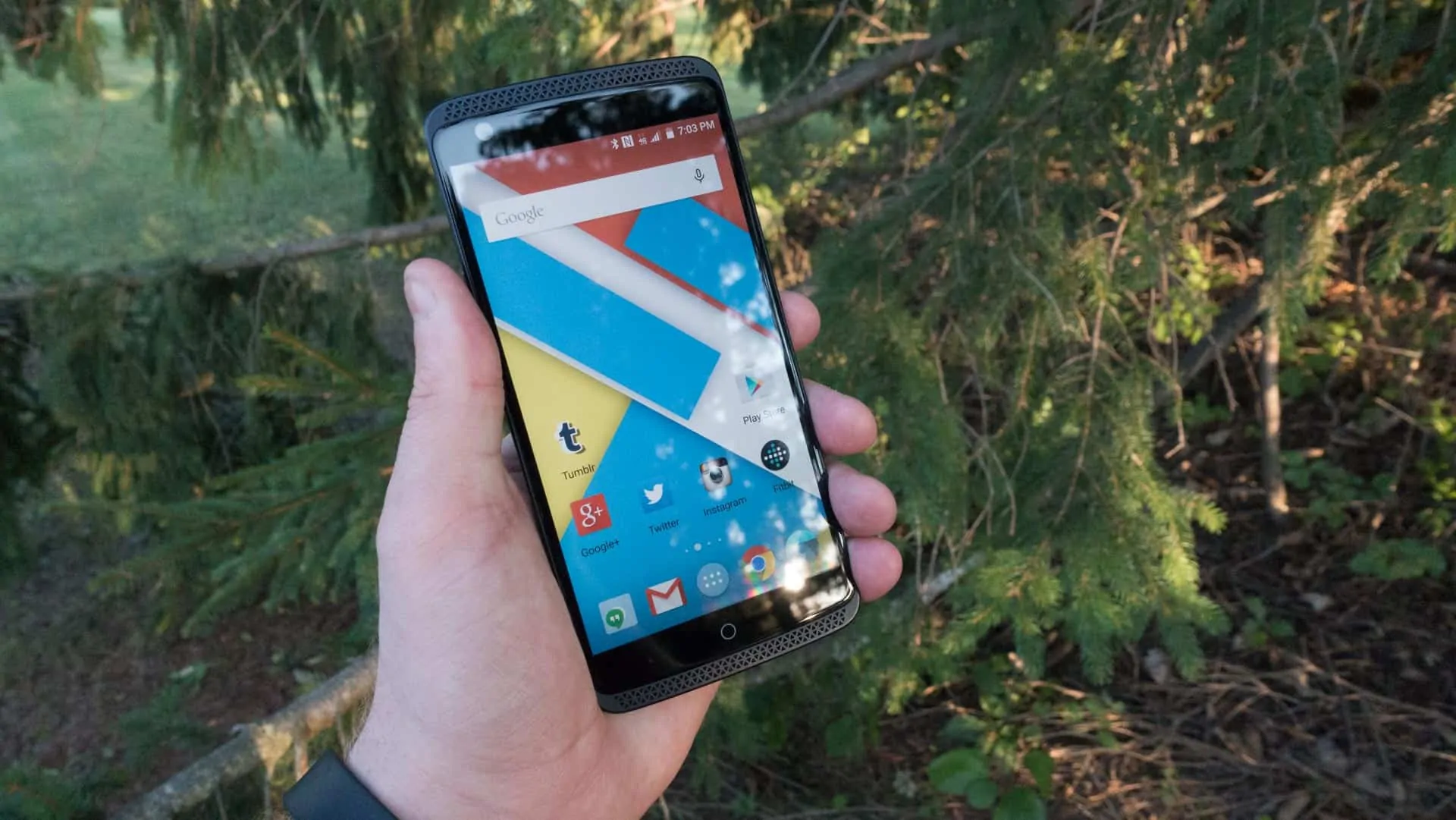
Inside the Axon Pro we have a Qualcomm Snapdragon 810 powering the show. This is Qualcomm’s latest chipset, it’s an octa-core 64-bit chipset. We also have 4GB of RAM inside along with 32GB of storage. There is no expansion for storage, nor is there an option for 16GB or 64GB models. There is also a 3000mAh non-removable battery inside. On the front, ZTE has a 5.5-inch Quad HD IPS Display there, with what looks like dual front-facing speakers, but there is just one. Also on the front is your 8MP front-facing camera, and the back houses two cameras. There is a 13MP main camera as well as a 2MP camera for getting depth info and such for your shots.
Hardware
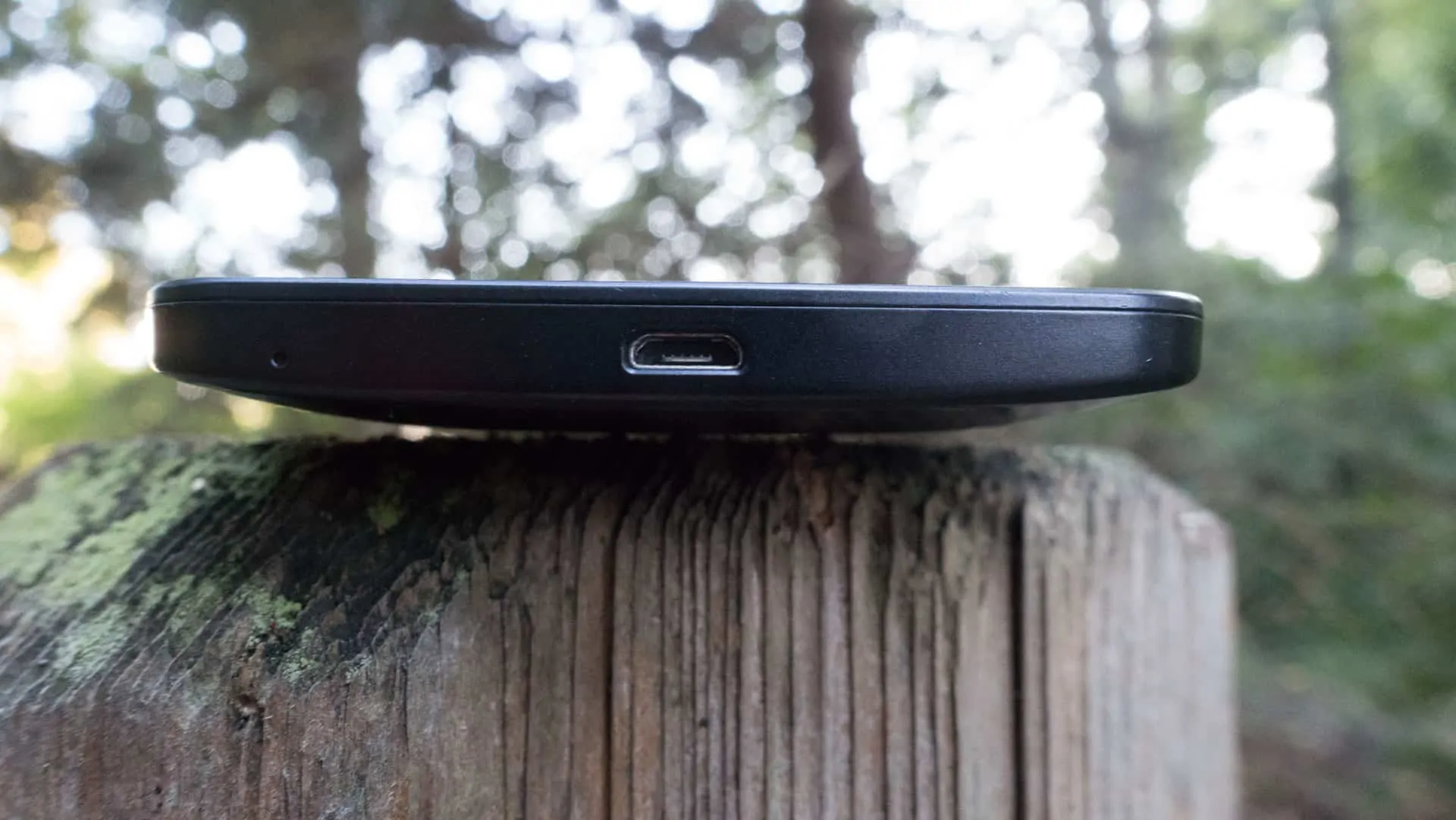
This is something that blew me away when I opened the box. Now I’ve seen pictures of the Axon Pro and such, since it was announced almost two months ago. But to open the box and pick it up was a whole other story. As mentioned above, the Axon Pro sports an aluminum unibody design. Which is available in silver, gold and blue. Obviously, we have the blue version here. Which looks quite nice. ZTE really has their branding all over this phone, and I’d say it’s not in a bad way. If you look at the camera module on the back, between the two cameras you’ll see a triangle pattern. That also shows up on the front for the speaker grill and the top where the sensors and such are located. That triangle is also used in their Axon name. It’s subtle and adds a bit of class to the phone. I, personally, really like it. The phone isn’t completely blue either. There are a few touches of an almost bronze color here. Most prominently on the back of the phone with the camera module. But also on the buttons located on the sides of the phone. However it’s only there for the sides of the buttons.
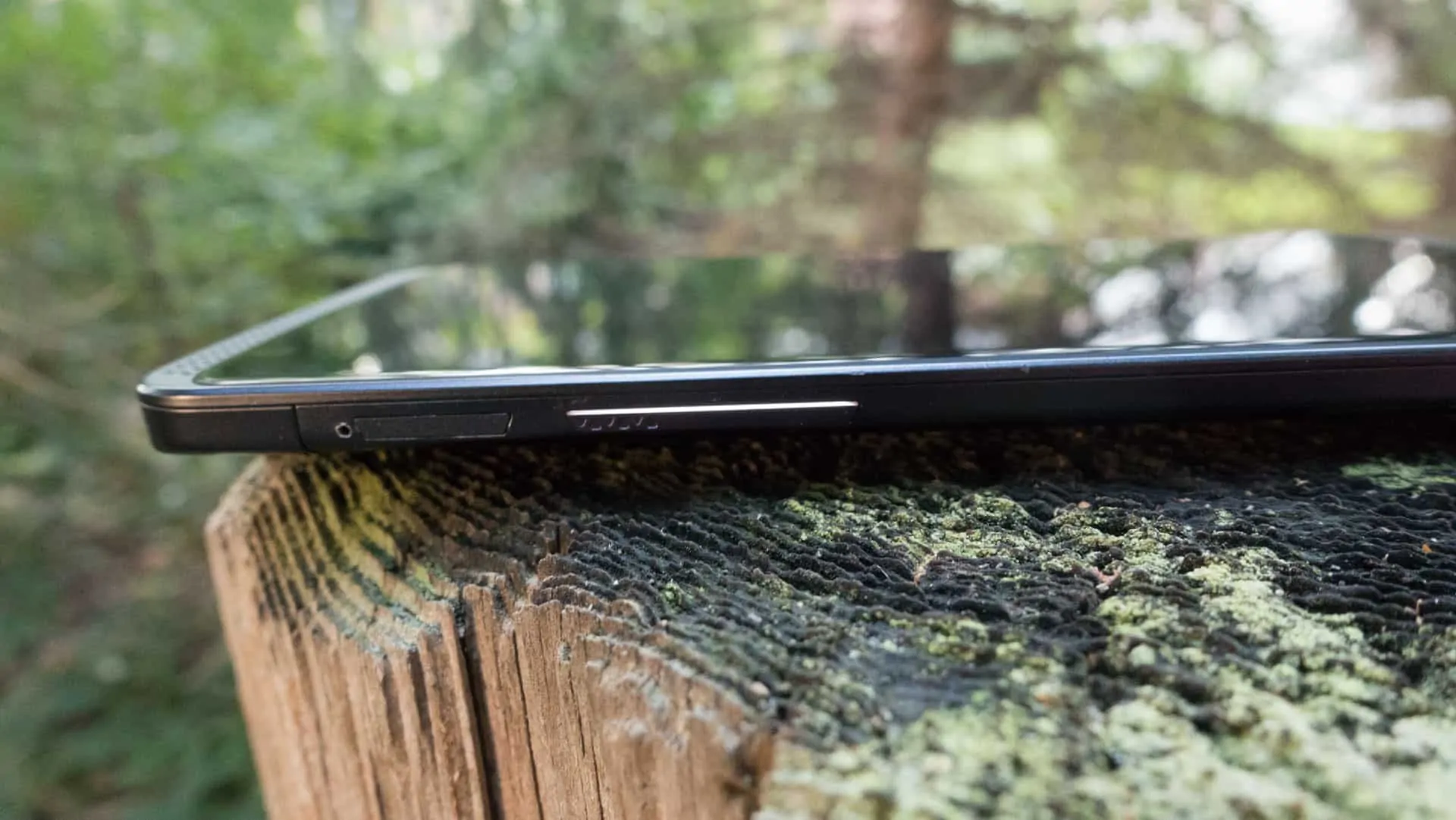
Speaking of the sides, ZTE has a power button, a volume rocker and a dedicated camera button here. The dedicated camera button is something we don’t see everyday. In fact, one of the only other OEM’s doing this is Sony. However, one thing I dislike about that button is that it can only be used as a shutter, and not a button to open up the camera app. The volume rocker, power button and camera button are all perfectly placed. The volume rocker and power button especially. They are just a tiny bit out of reach, depending on how you hold the phone. Just enough to keep you from pressing them by mistake. But not too far out of the way to make you shimmy your hand up the phone to utilize them. This is something that ZTE is actually proud of, when I spoke with them about the Axon Pro. As we’ve seen with some other phones, the power buttons are way out of the way where no one can reach it comfortably. So my hats off to ZTE on this one.
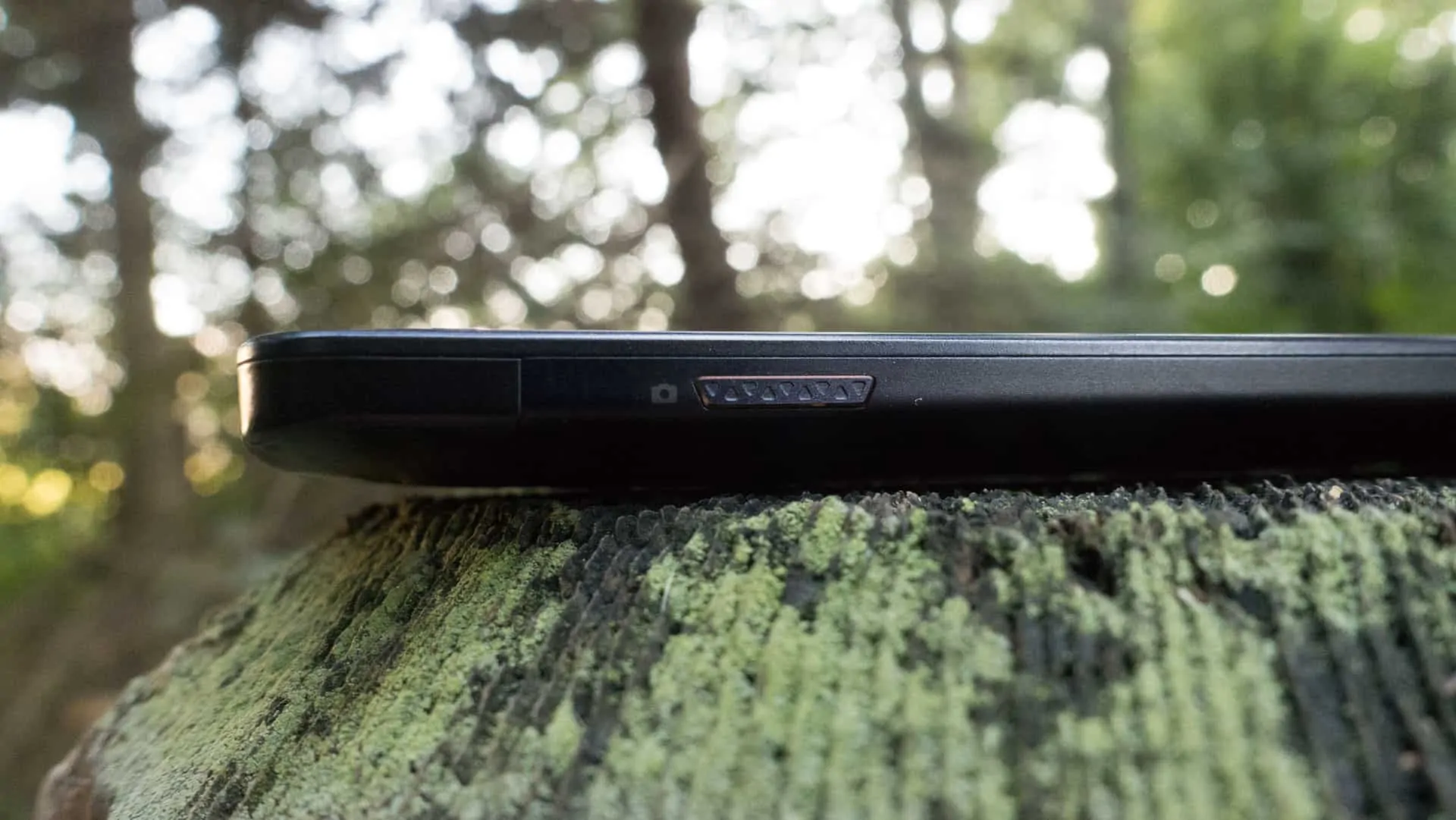
Holding the ZTE Axon Pro in the hand is a nice feeling. We’ve seen with some all-aluminum phones – mainly HTC’s One series – that they can be pretty slippery. However, the Axon Pro has not been slippery for me at all. It’s also worth noting that with HTC’s One series the silver colors are the most slippery, and that is likely true about ZTE’s Axon Pro here. But we do have a darker color. Not only does the Axon Pro feel nice in the hand, but it fits almost perfectly. I can actually use this phone one-handed which makes it one of the few 5.5-inch phones that I can use with just one hand.
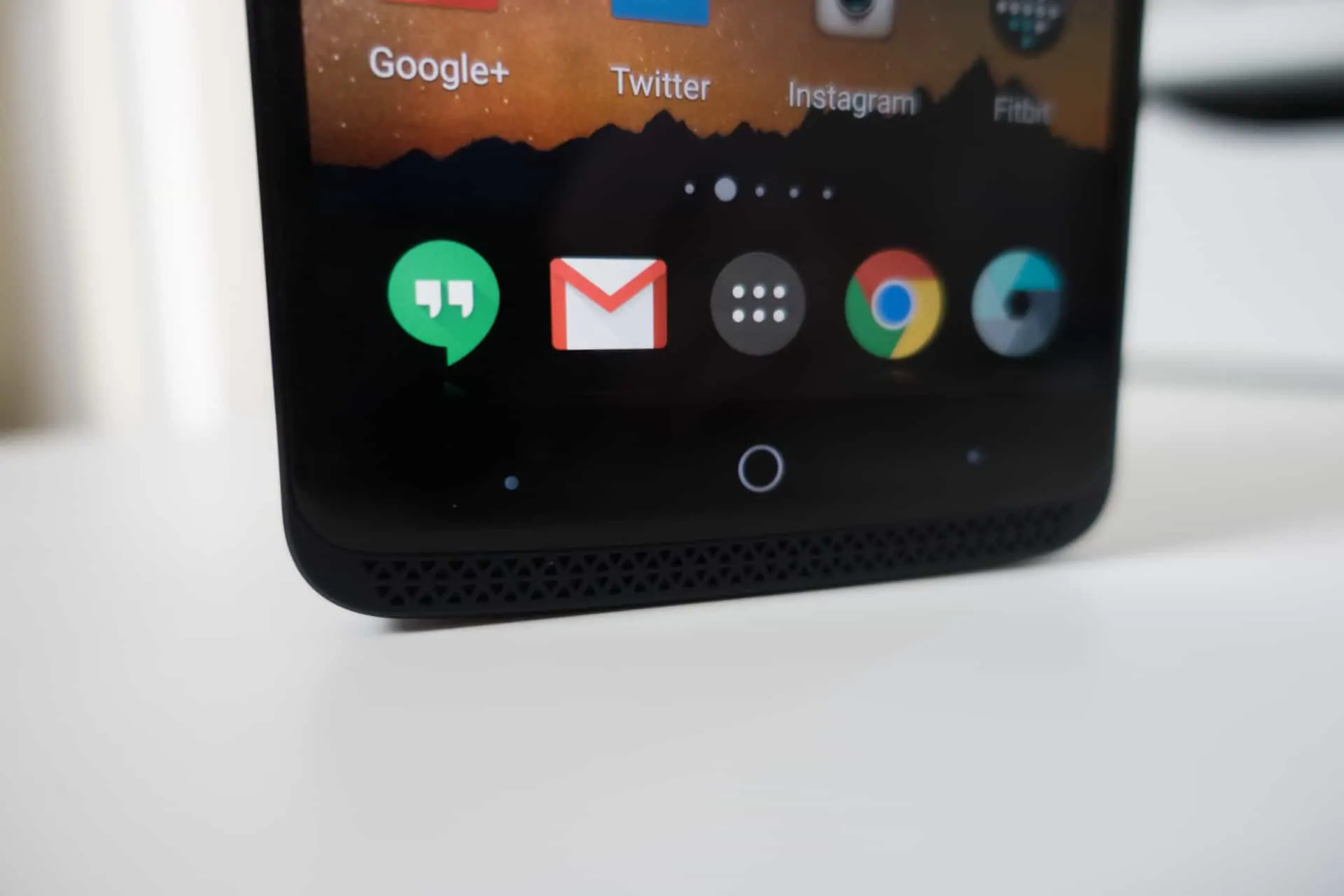
With the navigation buttons here, ZTE did something a little different. They stuck with the capacitive home button which has a circle. Similar to their Nubia smartphones that are on sale in Asia. While I’m not a big fan of capacitive keys, I do like this home button. It doubles as a LED notification light. So the circle on the home button pulses when you have notifications. Something we saw with the LG G Pro back in the day, but that notification light did change colors. It appears that ZTE just pulses white. And if you’re outdoors or in a bright environment, that can be tough to see. ZTE also has two additional capacitive keys on either side of the home button that can be used as a back button or a recents key. ZTE sorta followed OnePlus here, even though the Axon Pro was announced before the OnePlus 2. But what they did was add a dot on either side of the home button, which acts as capacitive buttons. So this way you can customize which side the back key is on, without pressing what looks like a back key, that actually opens your recents. A nice, yet subtle touch.
Display
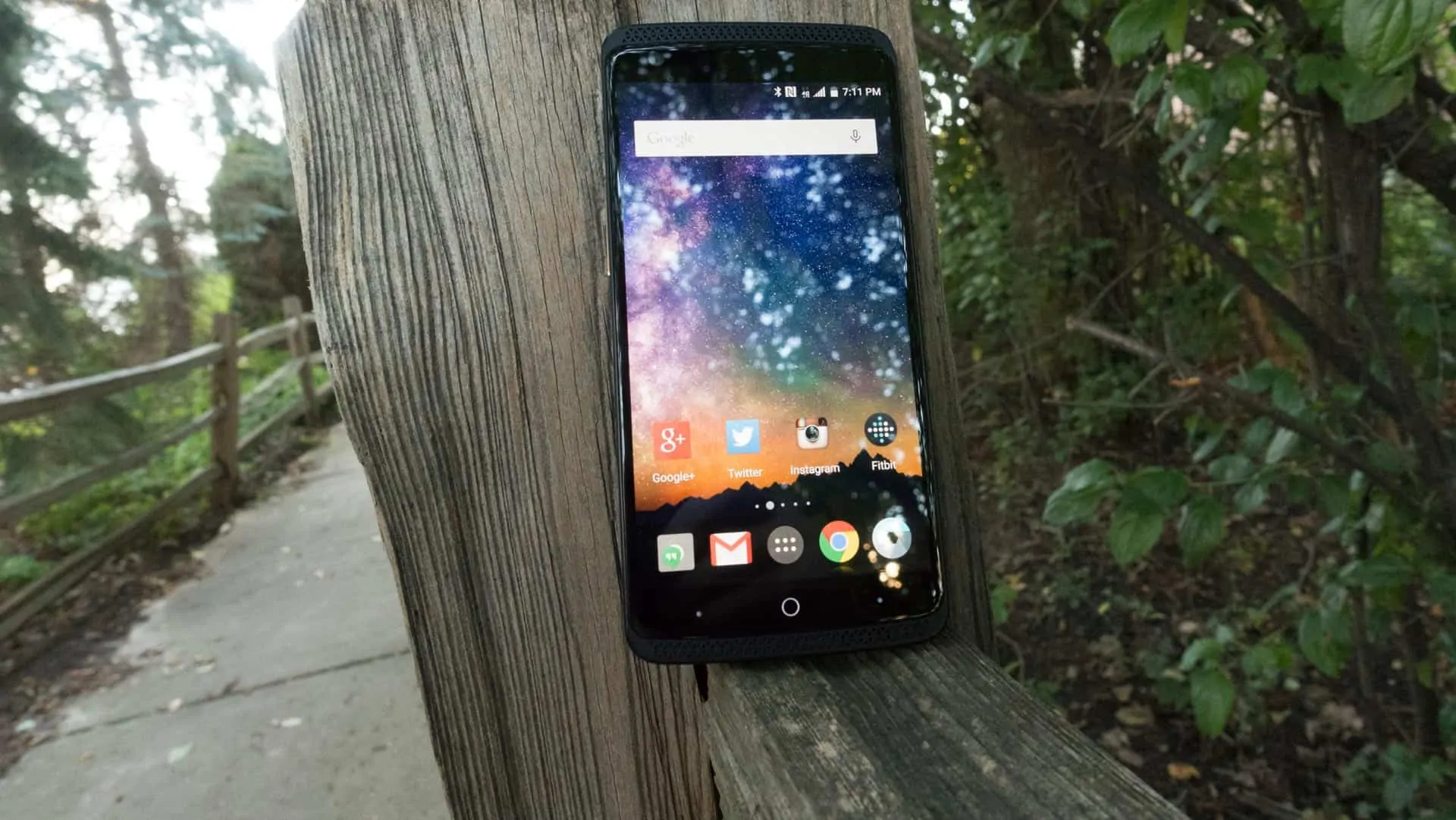
This year, I think I fell in love with AMOLED display technology. After using the Galaxy S6 earlier this year and then the Galaxy Note 5 recently, I’ve really started to love the colors of an AMOLED display. Sure they are a bit saturated, but watching videos and such on an AMOLED display is amazing. The LG G4’s display was okay, not crazy good, but okay. And it was an IPS display so I didn’t expect a whole lot from the Axon Pro. Boy was I shocked when I turned this thing on. The Axon Pro has a 5.5-inch 2560×1440 resolution IPS display here. Which gives it a ppi of around 534.
The display on the Axon Pro is very crisp and clear, it’s a bit saturated as well. Almost making me think that this was an AMOLED display. The display is so good, that I can hardly put the phone down. It’s just one of those things that you can’t help but look at all the time. One of my few issues with this display, however, is the brightness. Specifically the adaptive brightness which is part of Lollipop. When I have adaptive brightness turned on, sometimes it will keep the screen so dark that inside, I can hardly even see it. But outdoors it works perfectly. Even with Adaptive Brightness off, it can be tough to see the display indoors with the brightness turned all the way down. Other than that, I absolutely love this panel and this display. I think ZTE hit a home run in this department.
Performance
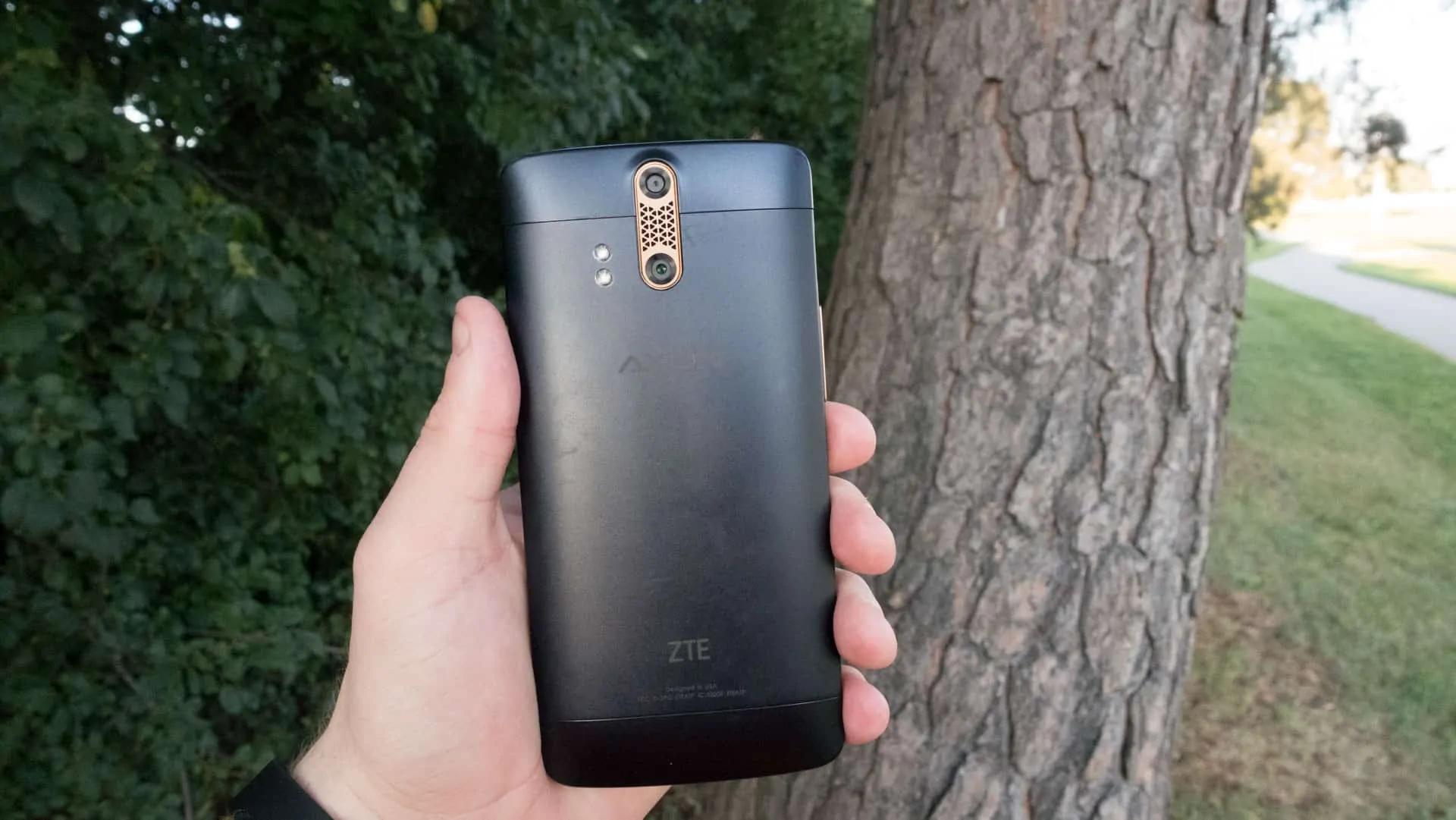
When it comes to the hardware specifications, we have a 5.5-inch 2560×1440 resolution display here being powered by the Snapdragon 810. It’s paired with 4GB of RAM. So now the inevitable question, does it overheat? Well I did install System Monitor on the ZTE Axon Pro from the day I got it. The hottest it ever got was about 113-degrees Fahrenheit. With the lowest being 76. Now that’s not overly hot, actually, and when using the phone, I couldn’t really feel a lot of the heat from the phone on my hand while it was that hot. That’s good, considering it is an aluminum unibody here. I haven’t noticed any slowdowns here either. It seems to be running at the same pace the entire two weeks I’ve had the device. Now when it comes to gameplay, the Snapdragon 810 works pretty well. I played a few games here and there. Not a massively long gaming session, mind you, and didn’t have issues with heat or the phone slowing down.
On the RAM and multi-tasking side of things, no issues here either. 4GB of RAM is more than enough for just about any phone. And unlike a few other phones out there, the Axon Pro doesn’t aggressively close applications. I typically had around 1-1.5GB of RAM free with the Axon Pro. And never closed any apps, unless they were misbehaving.
Call Quality & Data
We’ve been using the Axon Pro on both AT&T and T-Mobile. We made calls on both networks, and those that we called stated that we sounded great. We didn’t experience any dropped calls on either network. As far as data speeds go, AT&T’s speeds were about what they are on most devices on their network. T-Mobile however was much faster. After doing some speed tests on the Axon Pro and getting around 125mbps downstream, I tried on my T-Mobile branded Xperia Z3 in the same spot, and still got around 60mbps downstream at the most. A nice surprise there for T-Mobile users.
Battery Life
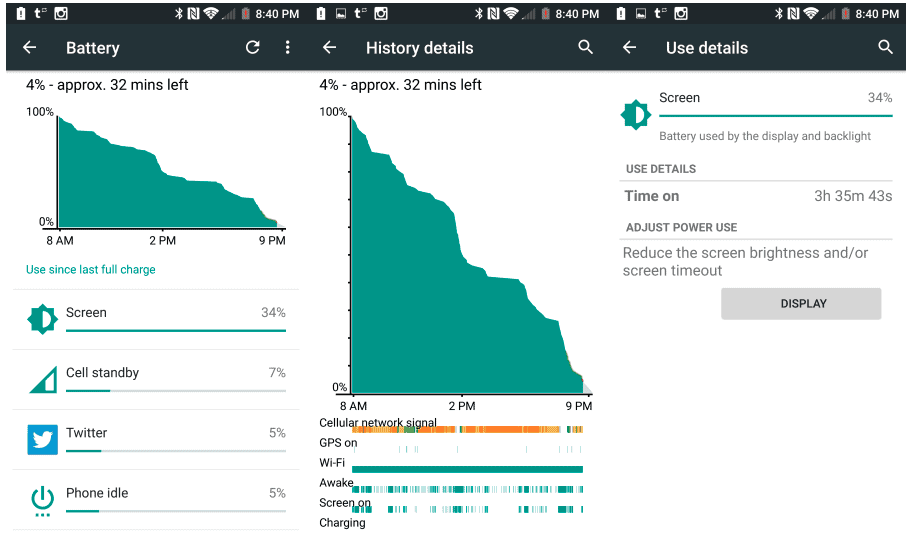
This is my biggest issue with this phone. It is one of the few phones I’ve used in recent memory that couldn’t get me through a full day. Here I’m talking about 7:30am to around 11-11:30pm. I typically would need to plug it in around 8pm because its down to about 5%. I was maxing out in the 3 hour range for on-screen time as well. Now if you’re a light user it could like get you through a full day, but for moderate and heavy users, it definitely will not. And that’s something I’d partially blame the Snapdragon 810 for. Hopefully it’s something that ZTE takes into account for the successor to the Axon Pro.
Benchmarks
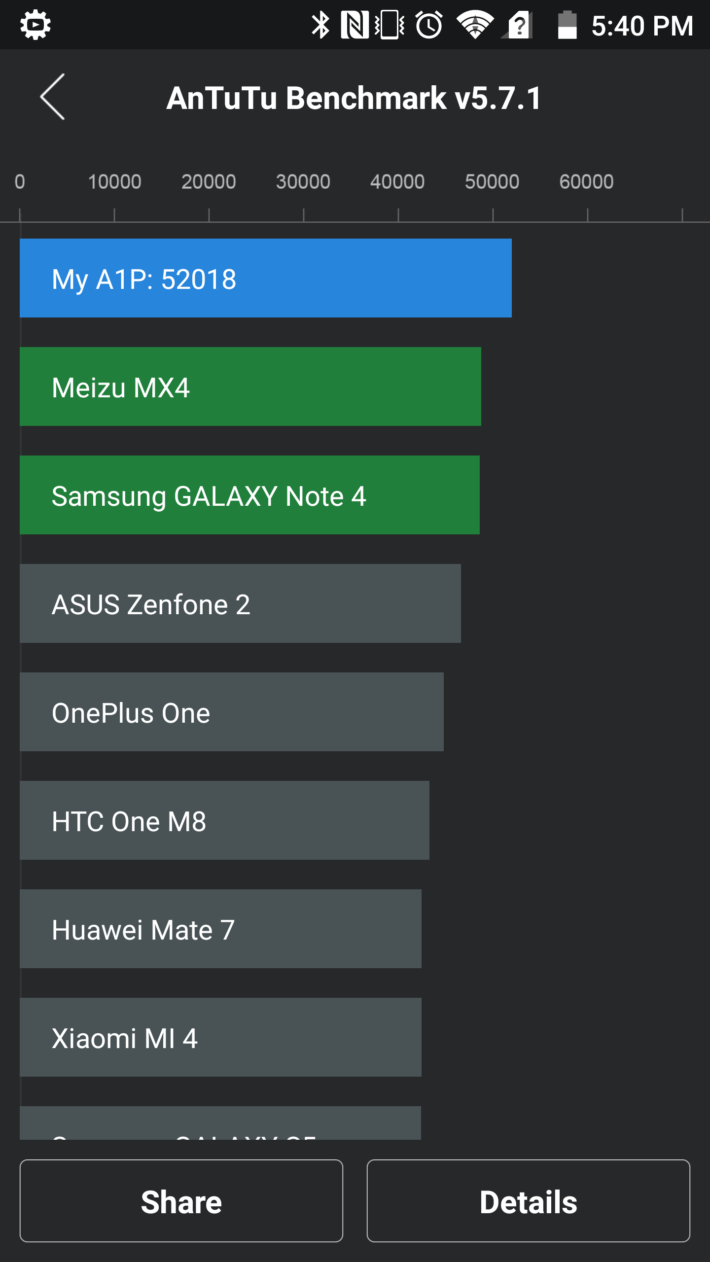
We ran AnTuTu on the ZTE Axon Pro, as we normally do. With its Snapdragon 810 and 4GB of RAM, it scored quite well, around 52 thousand. Now it’s important to remember that benchmarks do not equal real-world usage. Some phones score very high in benchmarks, but do not perform that well. However that’s not the case here, as you can tell the performance of the Axon Pro is quite good.
With the Axon Pro we also ran GeekBench 3 which you can see those results down below. With GeekBench 3 it gave us a multi-core score of 3893, and a single-core score of 954.
Software
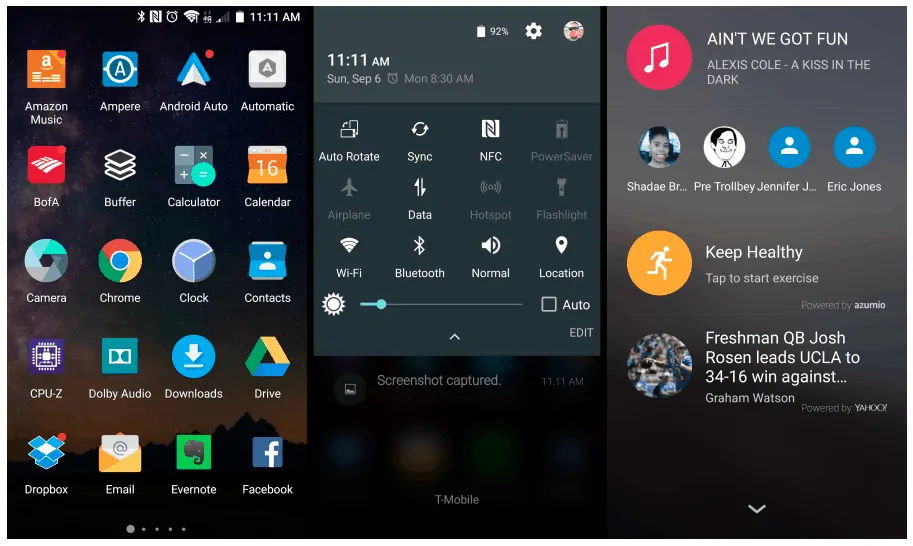
ZTE has always had a skin on their devices, although recent devices for the US have been mostly stock Android. Including the last ZTE smartphone I used, the ZTE ZMAX. The Axon Pro is literally, completely stock Android, with a few additions. Basically, ZTE took the Motorola approach here and I really like it. Some of the most noticeable changes are in the notification tray. When you first swipe down, you’ll see the bottom row of quick settings are available as well as your brightness slider. Swipe down again, and you get access to the other two rows. As well as the Settings and battery icons at the top, next to your profile picture for switching profiles. For the most part this works great, but when you tap on the battery, it does nothing. Now on stock Android, it would jump into your battery stats, but not here on the Axon Pro. These quick settings are customizable as well.
When it comes to the app drawer, there are only two changes from stock Android that catch my eye. That’s the background, which is transparent instead of a white card. And the other being that it loops now. So when you keep swiping over to your last page, it’ll keep going to your first page again. Very nice for those that have a lot of apps, as you can quickly jump to the last or second to last page. ZTE also changed up the settings. Not only did they change the groups, but also where everything is located. So in stock Android, you’ll see “Data Usage” underneath the WiFi and Bluetooth, but here on the Axon Pro, it’s in another section. Not a huge deal, but it will take some getting used too.
One of the more interesting features comes up when you swipe up from the bottom of the device. This is known as the Z-Tray. There you will see the last song you played, no matter what audio app you used. Also there are four contacts there that are saved as your favorites from the dialer. Below that is your summary from Azumio, which is a health app. Sort of like S Health from Samsung. Which you can connect to from your Google account, making it really effective. Finally, at the bottom of that page, you’ll see news headlines from Yahoo. It’s a very out-of-the way feature, but still quite useful, in my opinion.
With just a few bloat apps pre-installed, and a very fluid experience with their software, ZTE has really hit the nail on the head here with the Axon Pro. Not only is it stock Android, but it provides an excellent experience for their users.
HiFi Audio
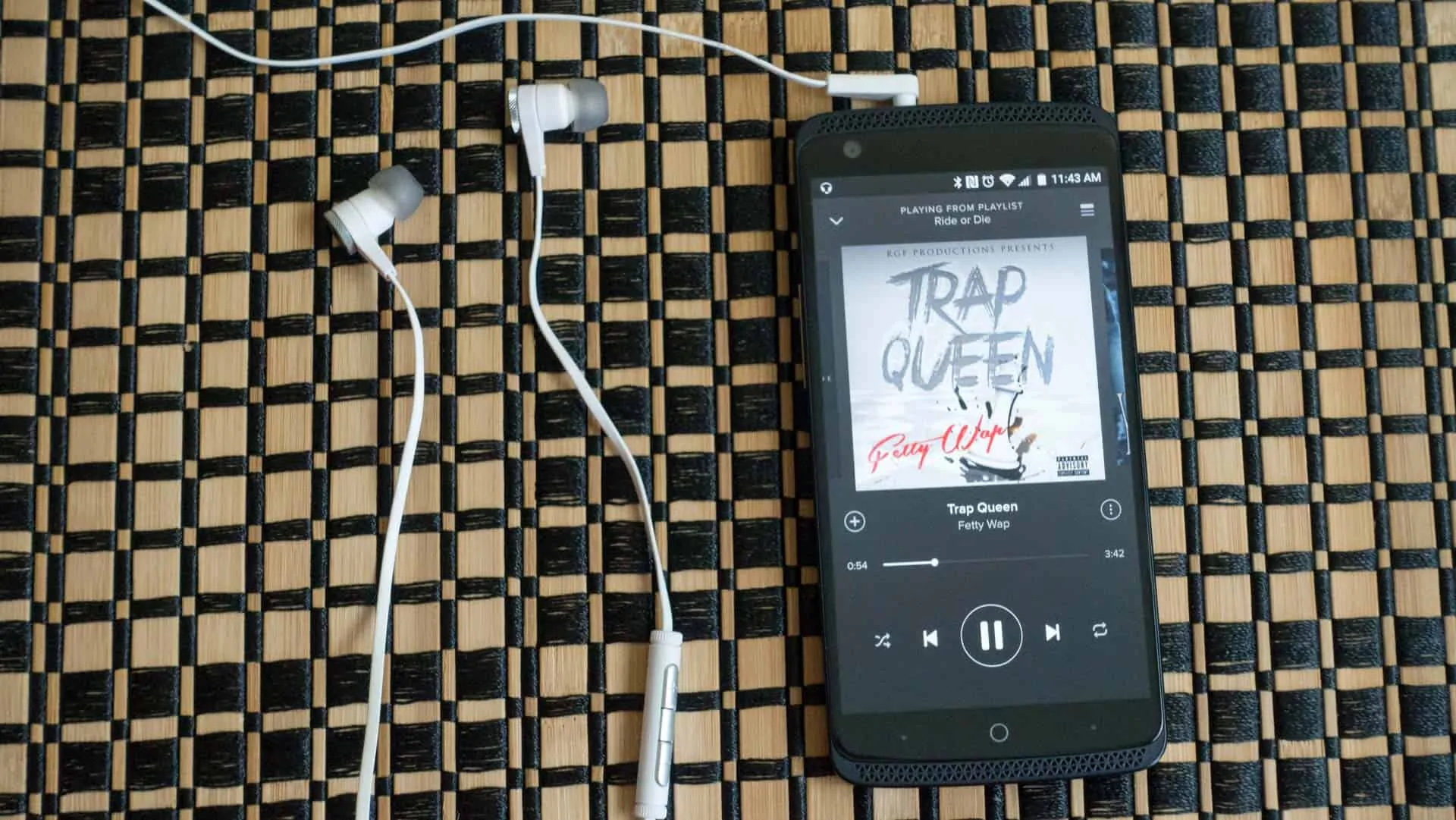
ZTE’s biggest selling point with the Axon Pro was the audio. They worked with both JBL and Dolby to bring HiFi audio to the Axon Pro. While the HiFi audio only works with the headphone jack, unfortunately, it’s still a great feature to have for audiophiles. ZTE is using the AKM 4961 HiFi processor in the Axon along with the Class D amplifier. If you’ve picked up the Axon Pro or planning on doing so, the first thing I recommend doing is busting out the included JBL earbuds and listening to your favorite music on the phone. The sound is truly amazing. Even just listening to normal quality music through the Spotify app, the different is huge, compared to other smartphones. But luckily the on-board music app includes support for 24-bit music files. Through a few of those on board, and you’ll wonder how you ever lived without it. ZTE does include a nice pair of JBL earbuds with the Axon Pro, but you can use any set of headphones and still experience that HiFi Audio. I tested this with a few headphones. Including my Bose SoundTrue and the A-Audio Legacy headphones. I’d say they sounded better than JBL’s earbuds, but then I also do prefer headphones over earbuds.
Unfortunately the HiFi audio experience doesn’t make the transition to the single front-facing speaker. The top of the phone is the earpiece and at the bottom is a single speaker. Now it’s a decent speaker here. Better than what Samsung is using on the bottom of their phone, but it won’t rival Boomsound, or even Alcatel’s front-facing dual speakers that are also made in partnership with JBL.
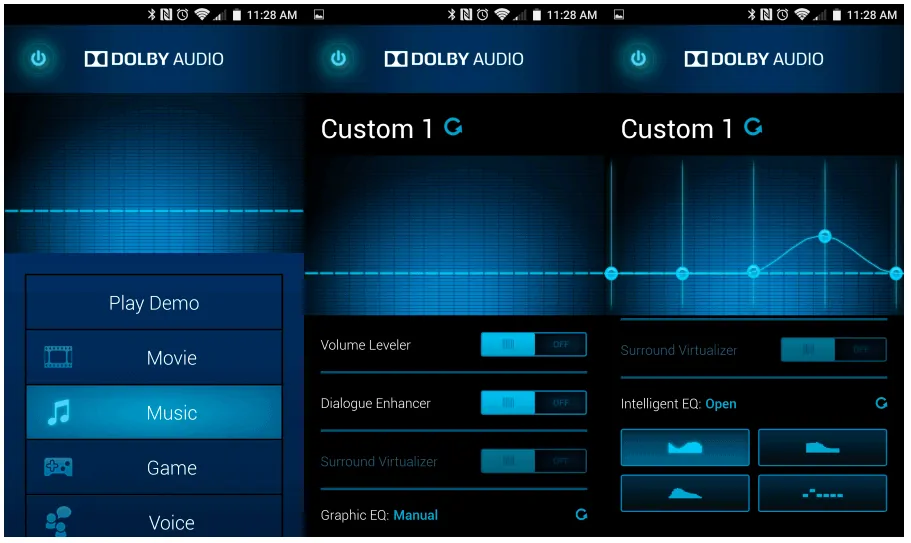
I mentioned that ZTE also worked with Dolby for these speakers, which they did. And you can find that app pre-installed on the Axon Pro. Basically it is a system-wide equalizer. Now they have a few pre-programmed sets here for movies, music, games as well as Voice. There are also a few custom ones that you can customize yourself. I’d also recommend playing the demo in the Dolby app to really see how things change up with the different EQ modes here.
Camera
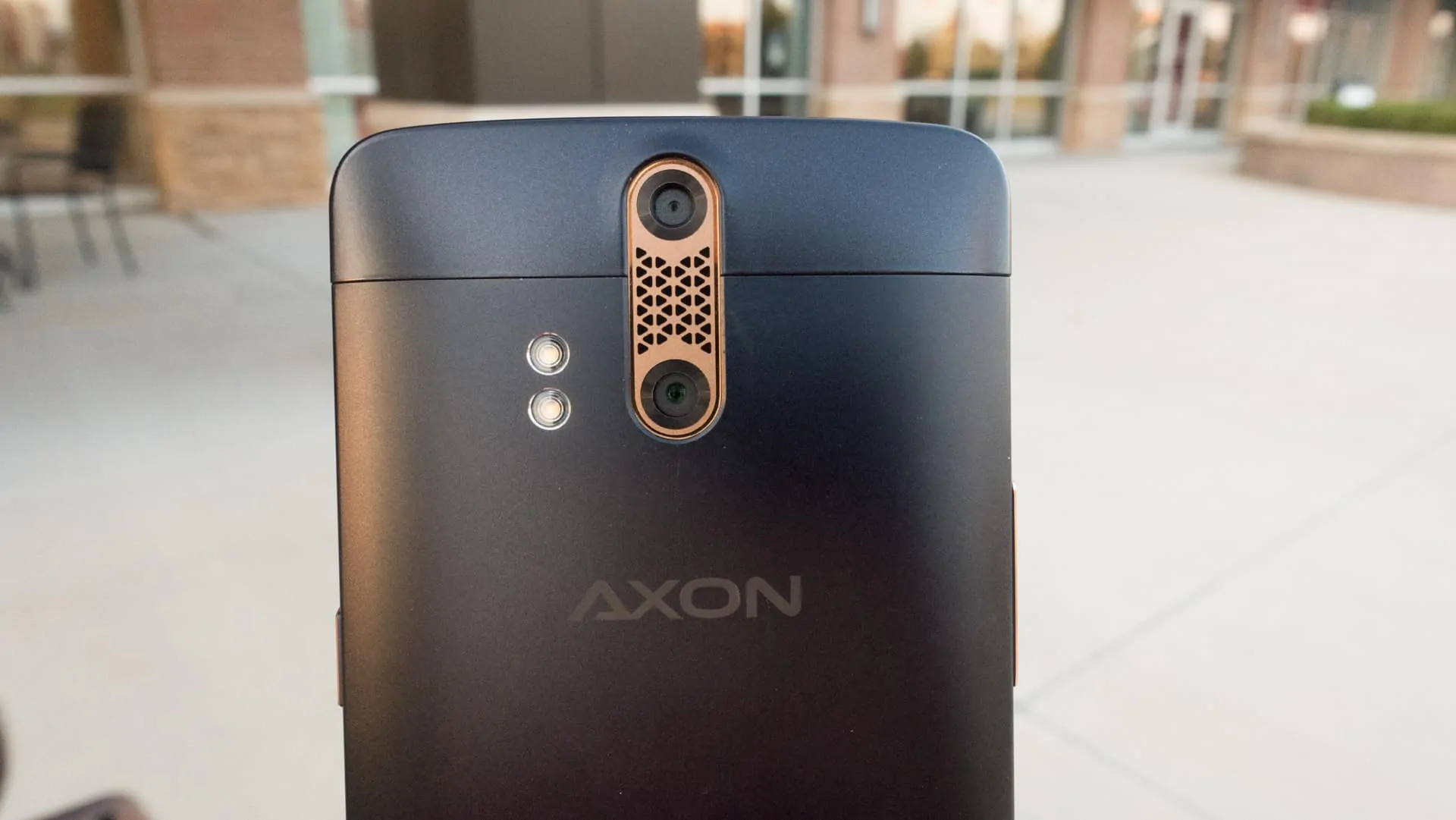
The camera here is a bit interesting. In a way, it reminds me of the HTC One M8’s camera, seeing as it is a duo-camera setup. ZTE did go with a 13MP camera though and a 2MP camera for depth information. The camera does take some nice pictures, although one thing I’ve noticed is if it’s in low-light it will not actually take the picture. Unless you have HDR on. Which HDR – as it normally is – is quite slow to take and save the picture, and in low-light it’s a bit slower. Which leads to blurry pictures, especially with street lights in the picture. With this camera, you can also lower your aperture all the way down to 1.0. However that is software based, while the hardware is f/2.0. The auto-focus is a bit slow here. It can sometimes take a few seconds to focus in, and of course it gets slower with less light. Once it focuses though, the shutter is quite quick.
In the camera app, there are a few modes. Above the shutter the app lists Bokeh, Auto and then a button for the other modes. Which those include Manual, Interval, Multi-Exposure, Slow Motion, Panorama and Sport. Making the camera great for all kinds of situations. The app is actually really intuitive. While still being minimal, it’s easy to use. Even for those new to smartphones.
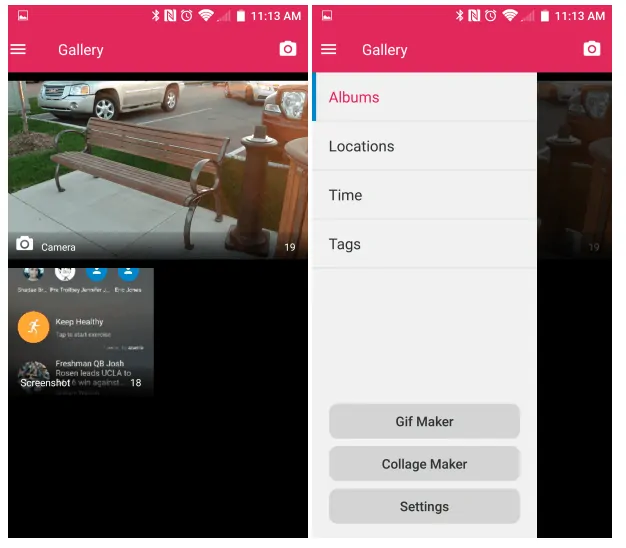
The Gallery app is pretty bare-bones, but there are a couple of features that are included that I really like. Within the Gallery app you can actually make an animated GIF using the GIF Maker feature. It’s a really cool feature, especially in this day and age where everything is a GIF. You can also make collages from within the Gallery app. Something else that’s hugely popular on Instagram. In fact they have built an app just for that. ZTE has made both of these very easy to use, and that’s probably the best part. Otherwise, you have all your usual stuff in the app, including bulk delete, sharing, etc.
You can find some camera samples from the ZTE Axon Pro in the gallery down below.
The Good
- The HiFi Audio included in the Axon Pro is just amazing. It’s something that I wish every phone would include. Also something I wish ZTE would bring to the included speaker on the Axon Pro.
- ZTE did an amazing job with the display here. If you’ve used or seen LG’s G3 or G4 which is an IPS QHD display, you’ll be blown away by the Axon Pro’s display, in comparison
- Having stock Android on this phone is a great choice by ZTE. While they did add a few other things into their OS, it’s still fluid and stock Android.
The Bad
- Battery life is my biggest complaint here. Not being able to get through a full day without needing to charge it is an issue. And an issue I haven’t had to deal with much in 2015, and even 2014.
- The camera is okay, in some situations. But it’s not amazing, especially when you have phones like the Galaxy Note 5 and LG G4 out there with their amazing cameras.
Final Thoughts

ZTE surprised me with the Axon Pro, and surprised in a good way. I wasn’t expecting a whole lot from ZTE with this phone. But they blew me away. Take away the battery issues, and this is as close to the perfect phone as you can get. ZTE seemed to do a good job of integrating the Snapdragon 810 into the Axon Pro, as the phone doesn’t heat up too much. And that’s surprising given its an aluminum unibody smartphone. ZTE is already working on the second generation of the Axon Pro, and I’m definitely excited to see what they do next time around.
If you have $450 to spend on a smartphone, you can’t really go wrong with the Axon Pro. But it’s also important to remember that there is a ton of competition in this space. With the new Moto X Style/Pure Edition, Alcatel OneTouch’s Idol 3, ASUS Zenfone 2, and a few others out there. So if you’re a heavy user, you may want to check out some of these others, as the Axon Pro likely won’t get you through a full day. However, if you are an audiophile, you will definitely want to buy the Axon Pro.

